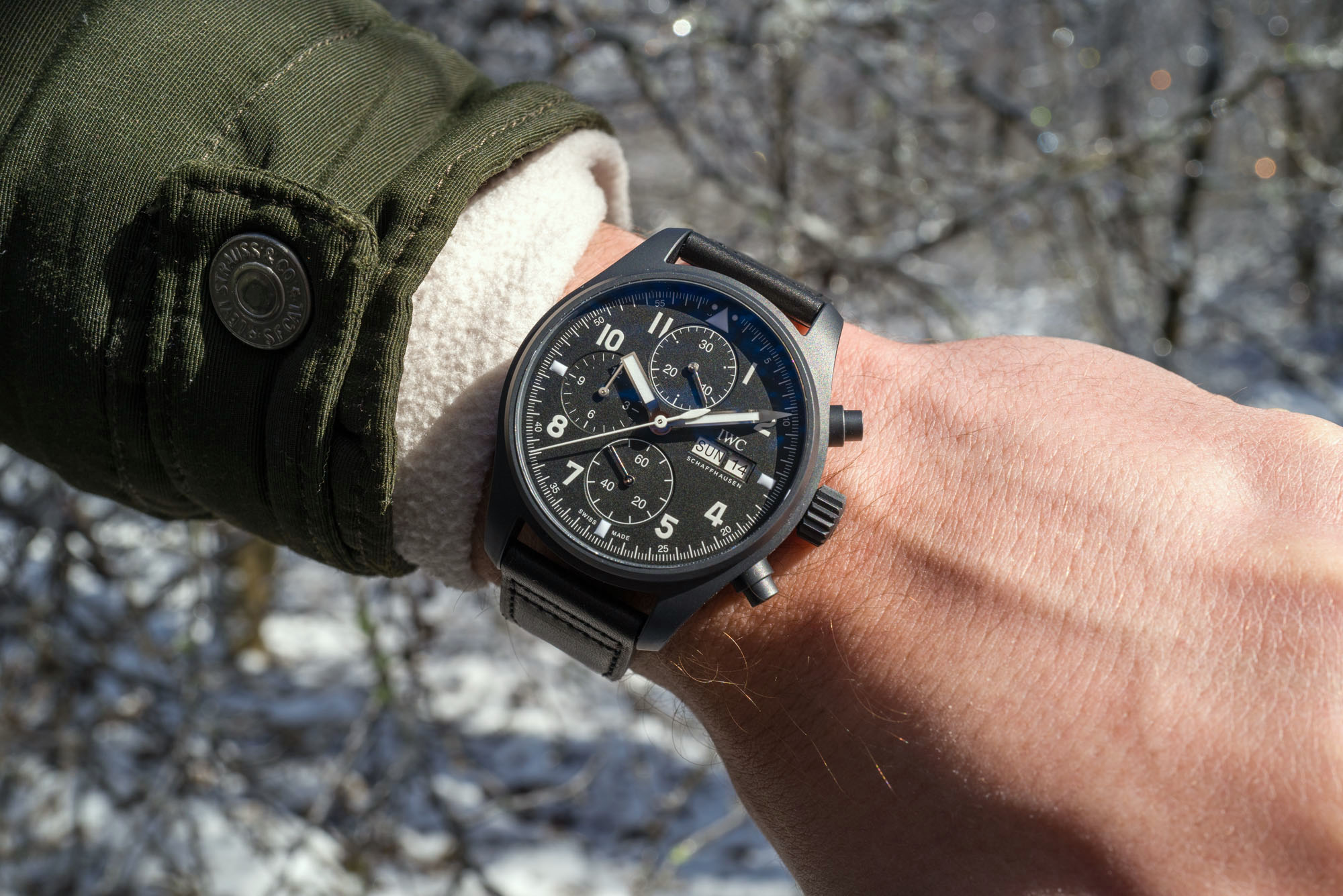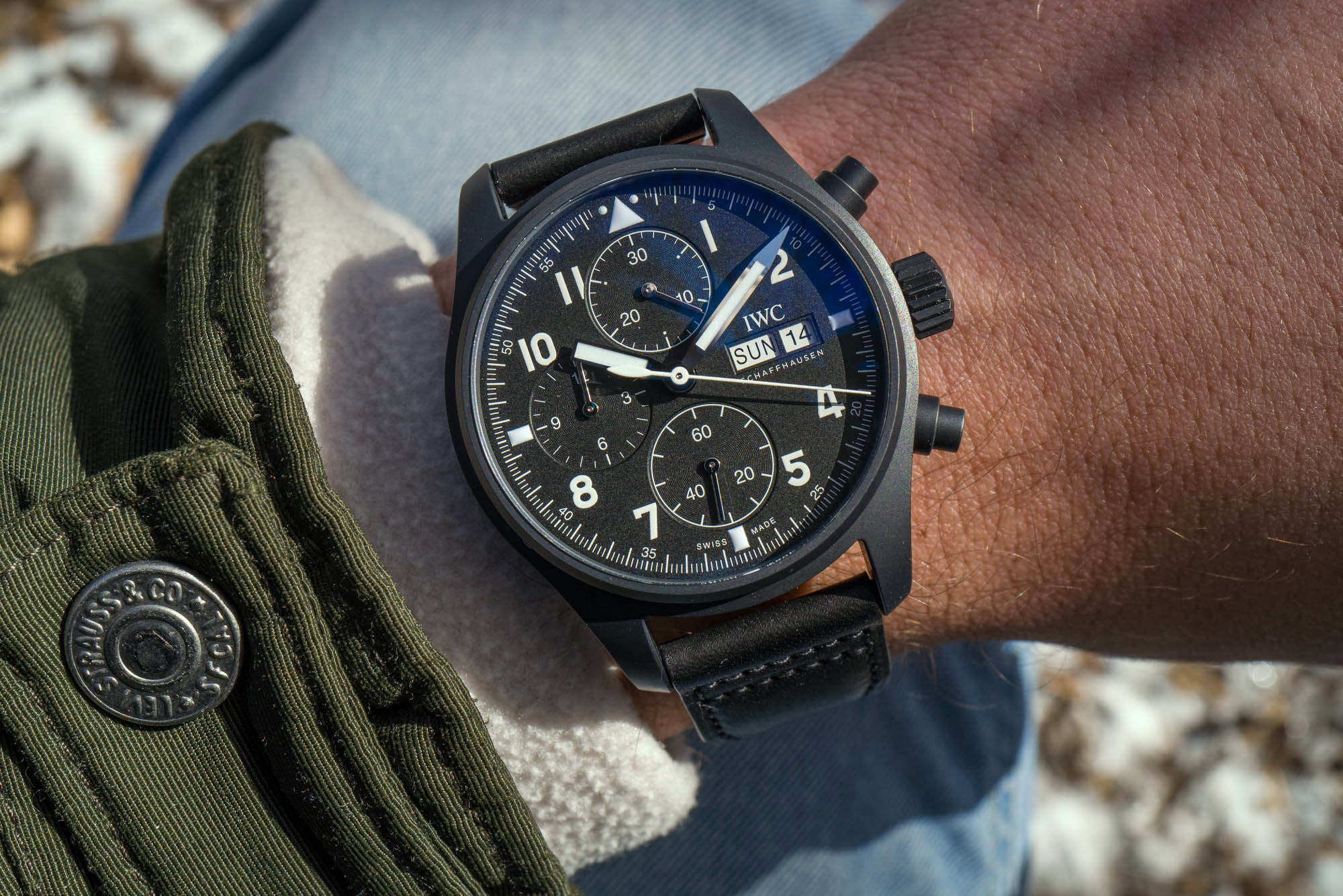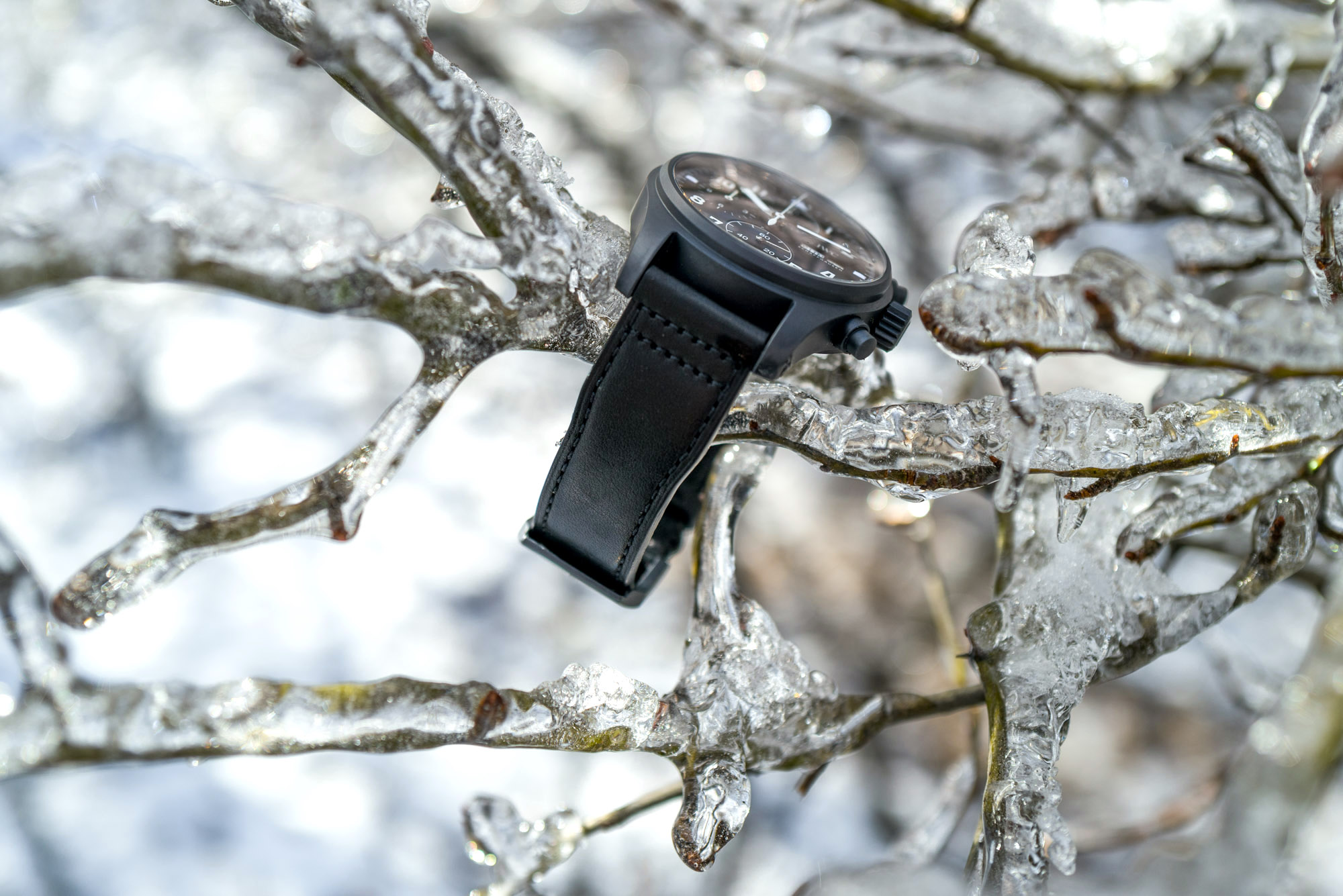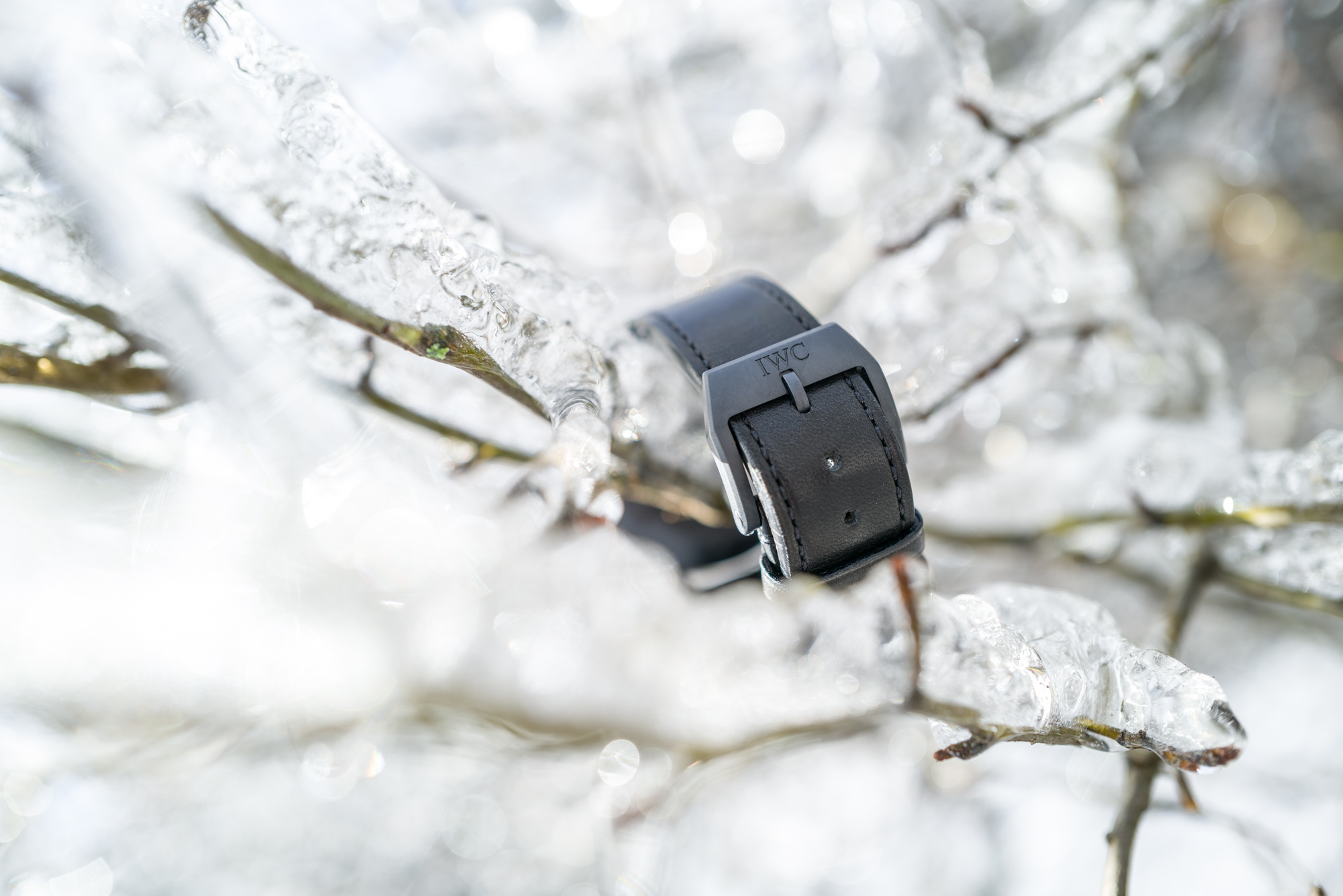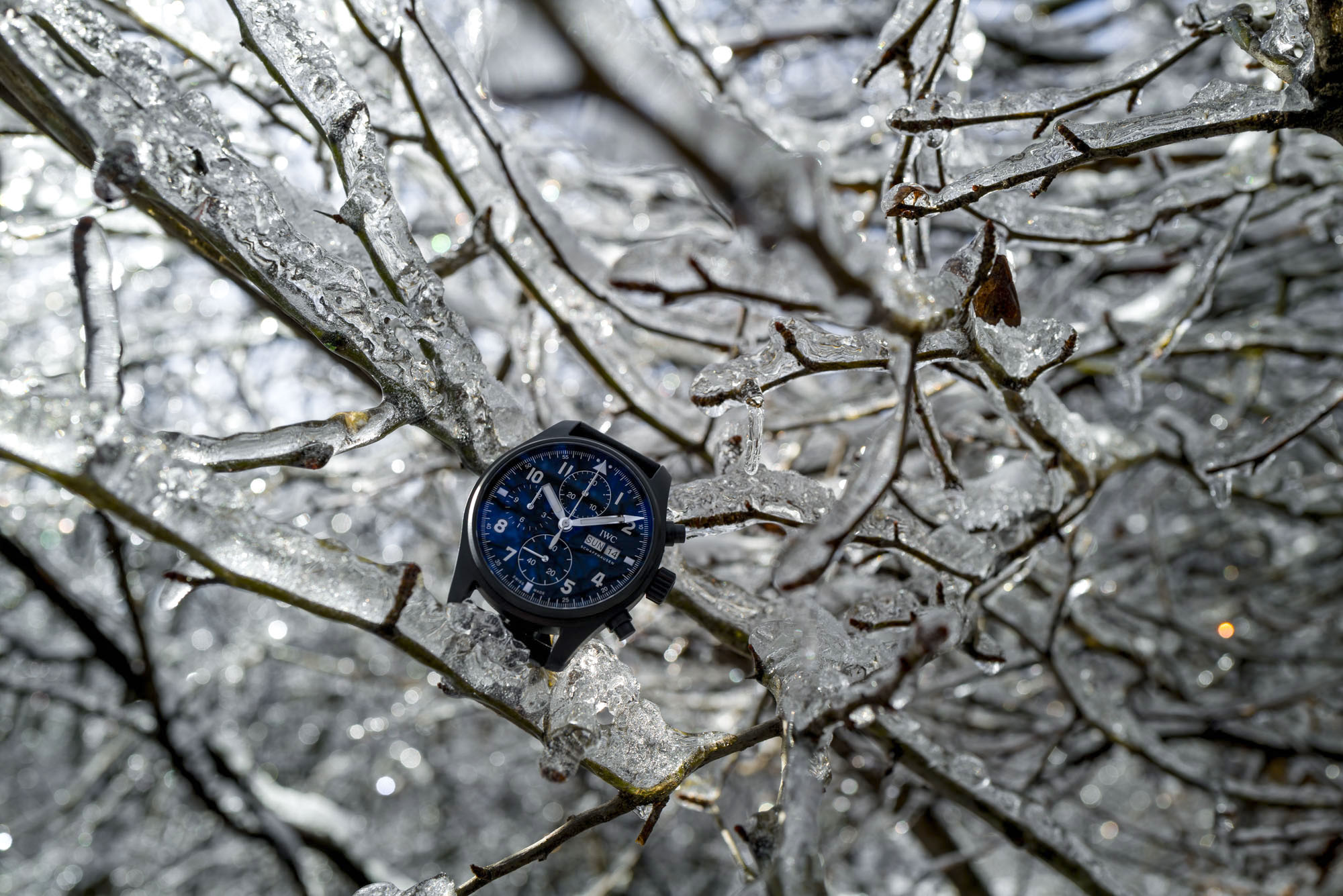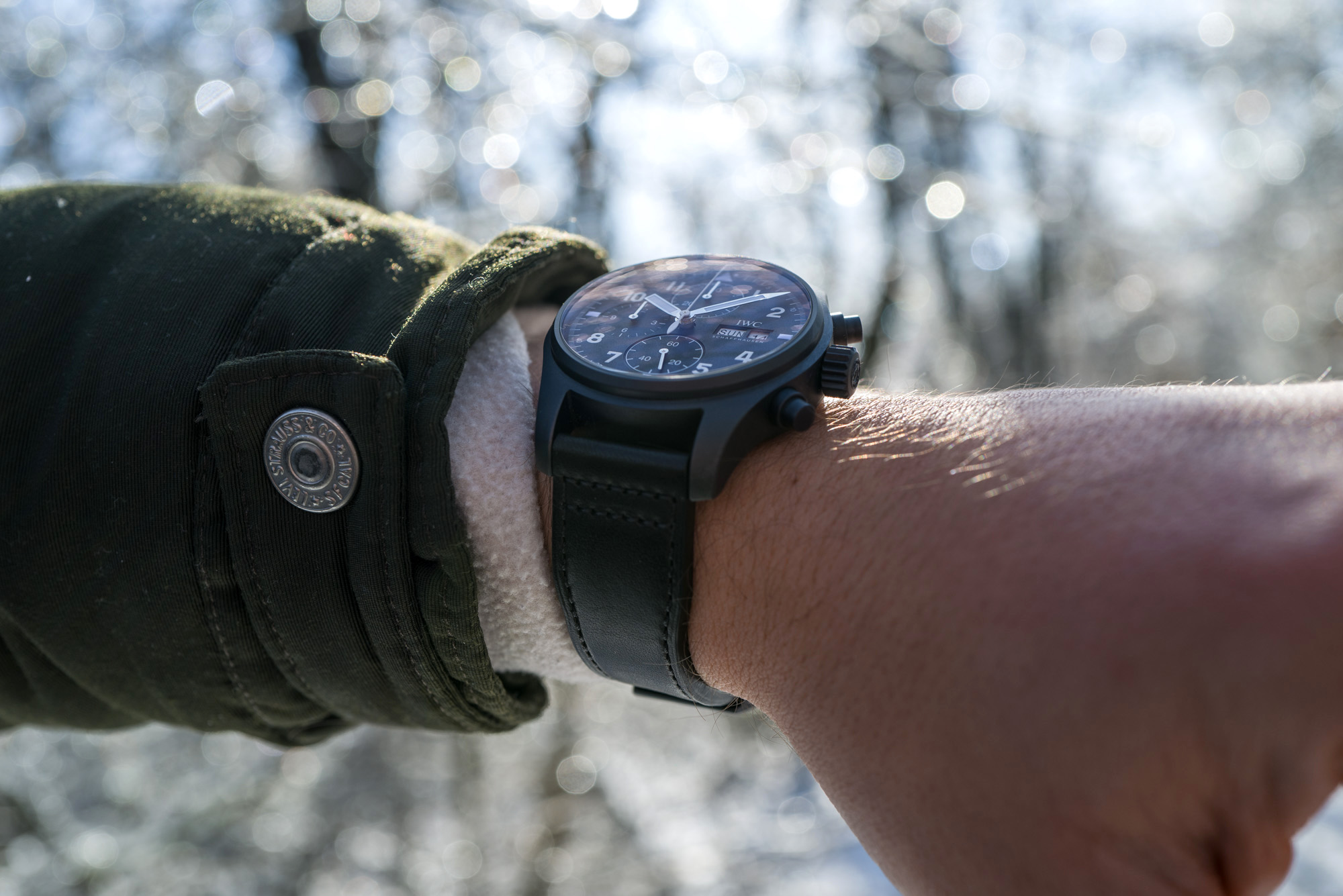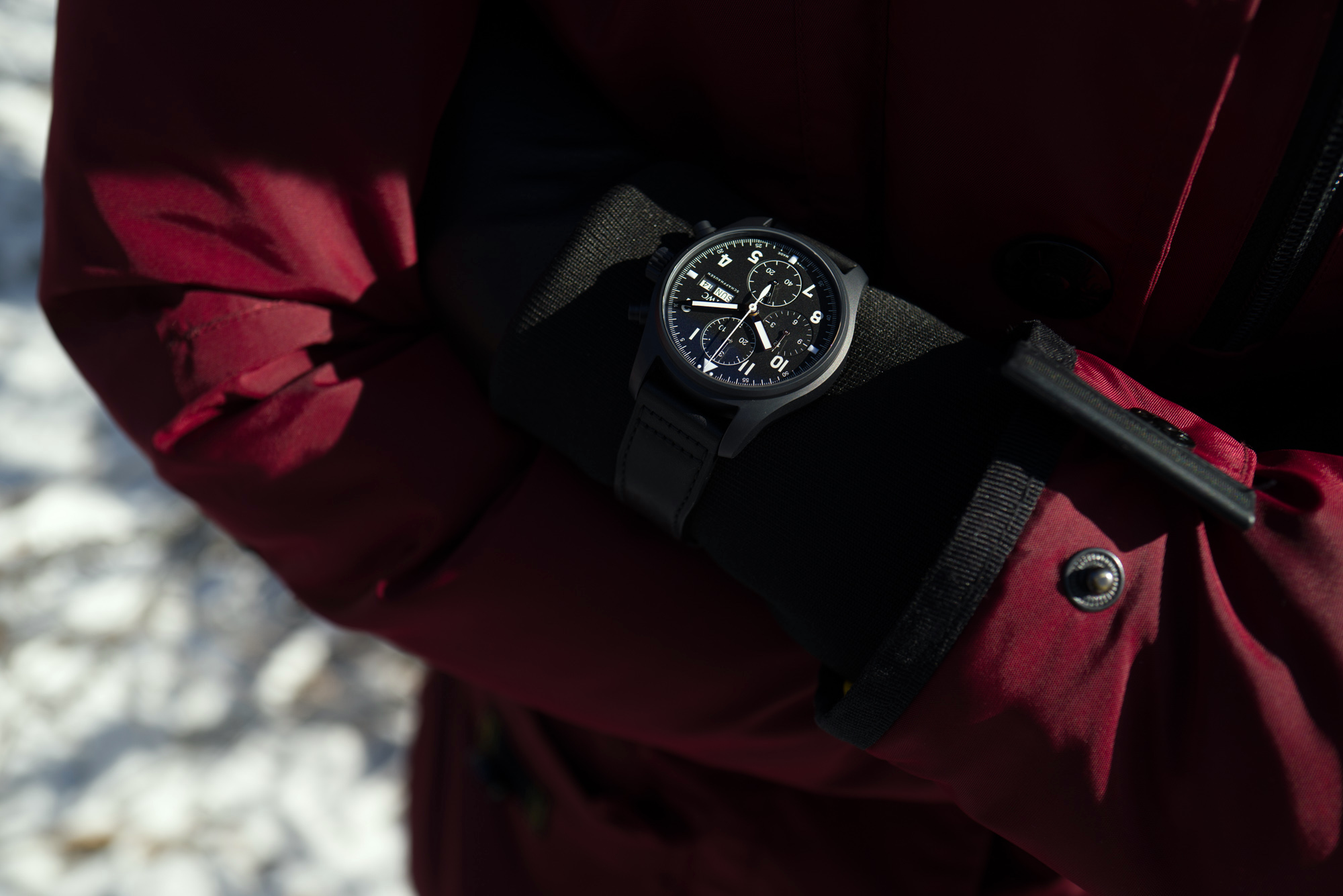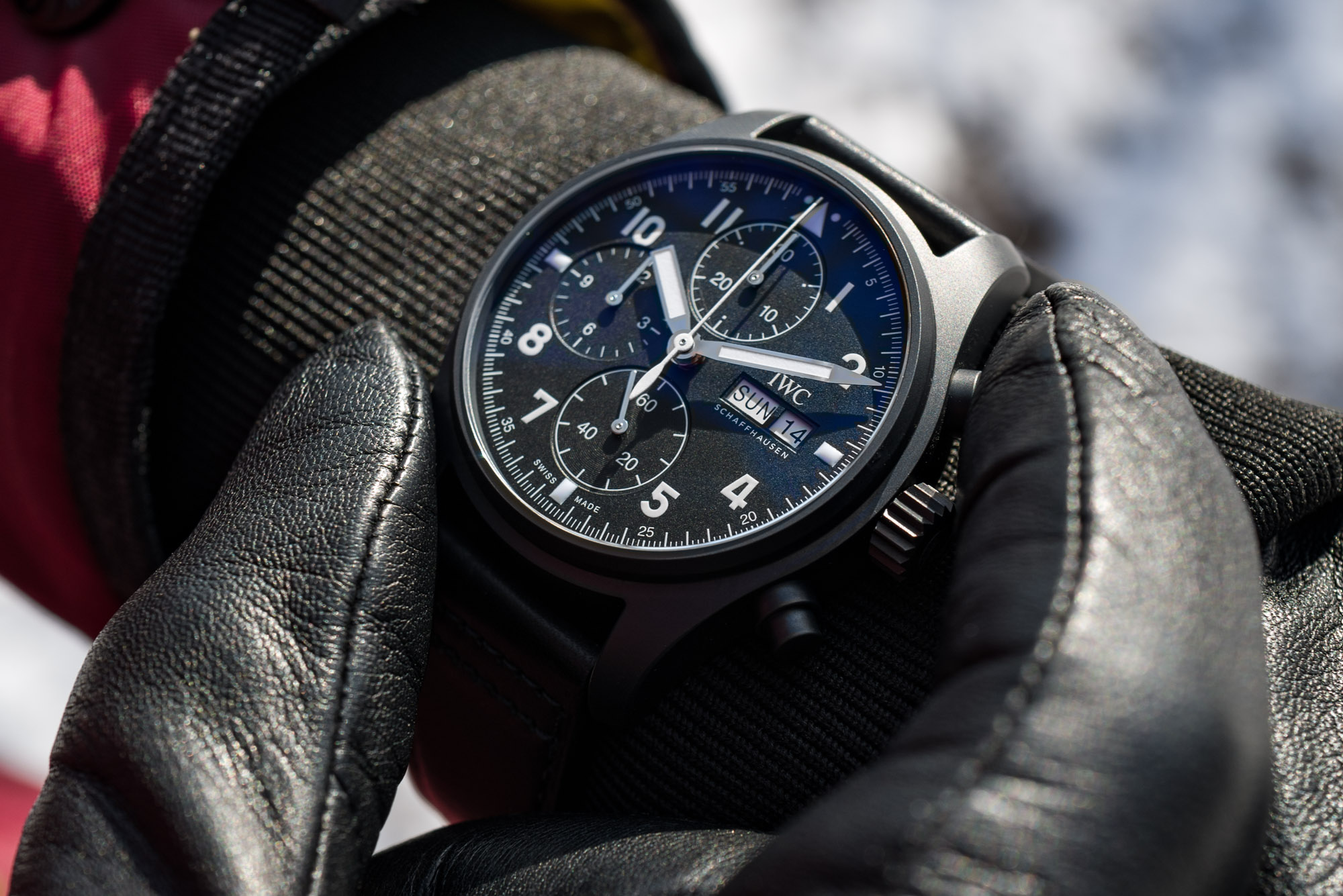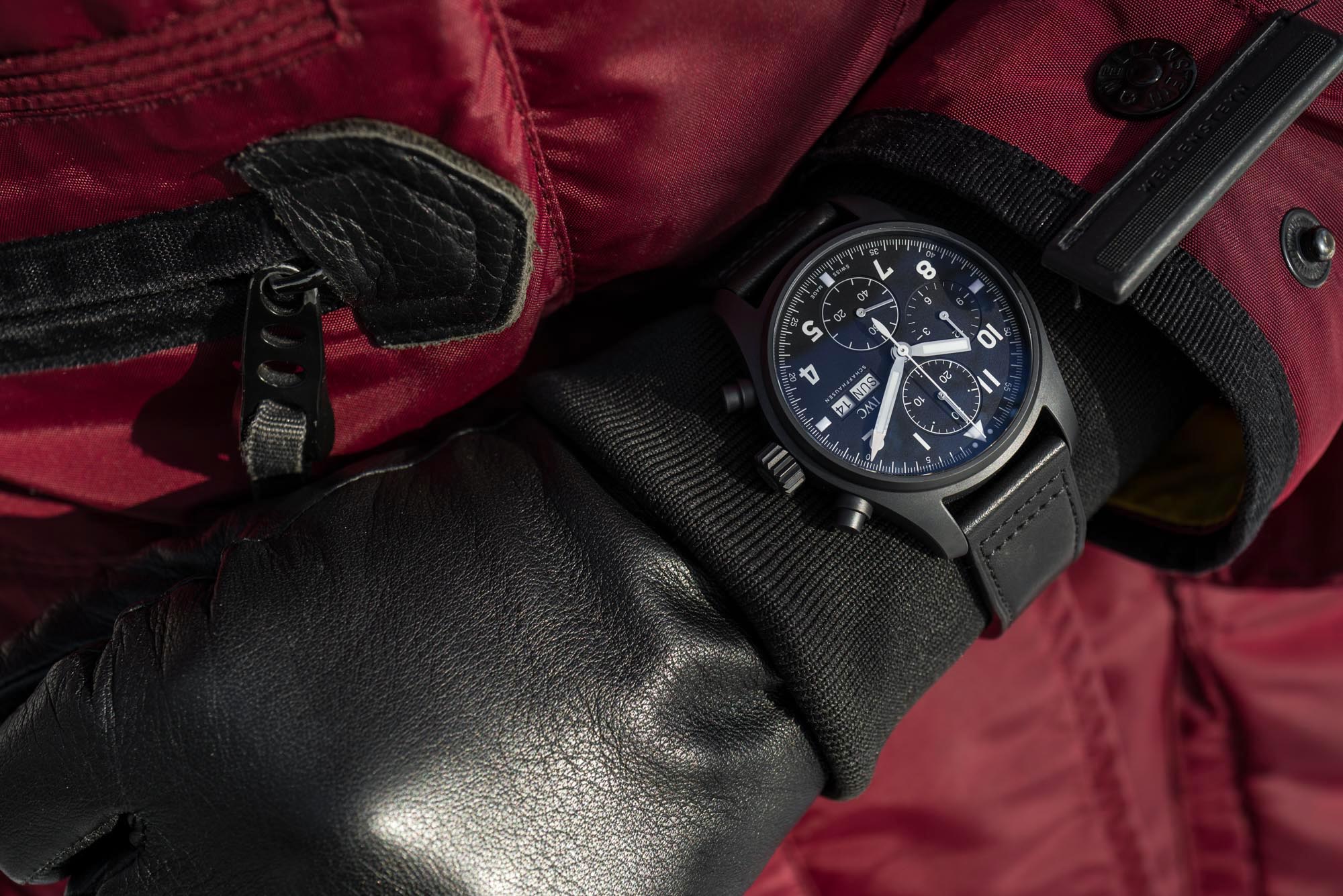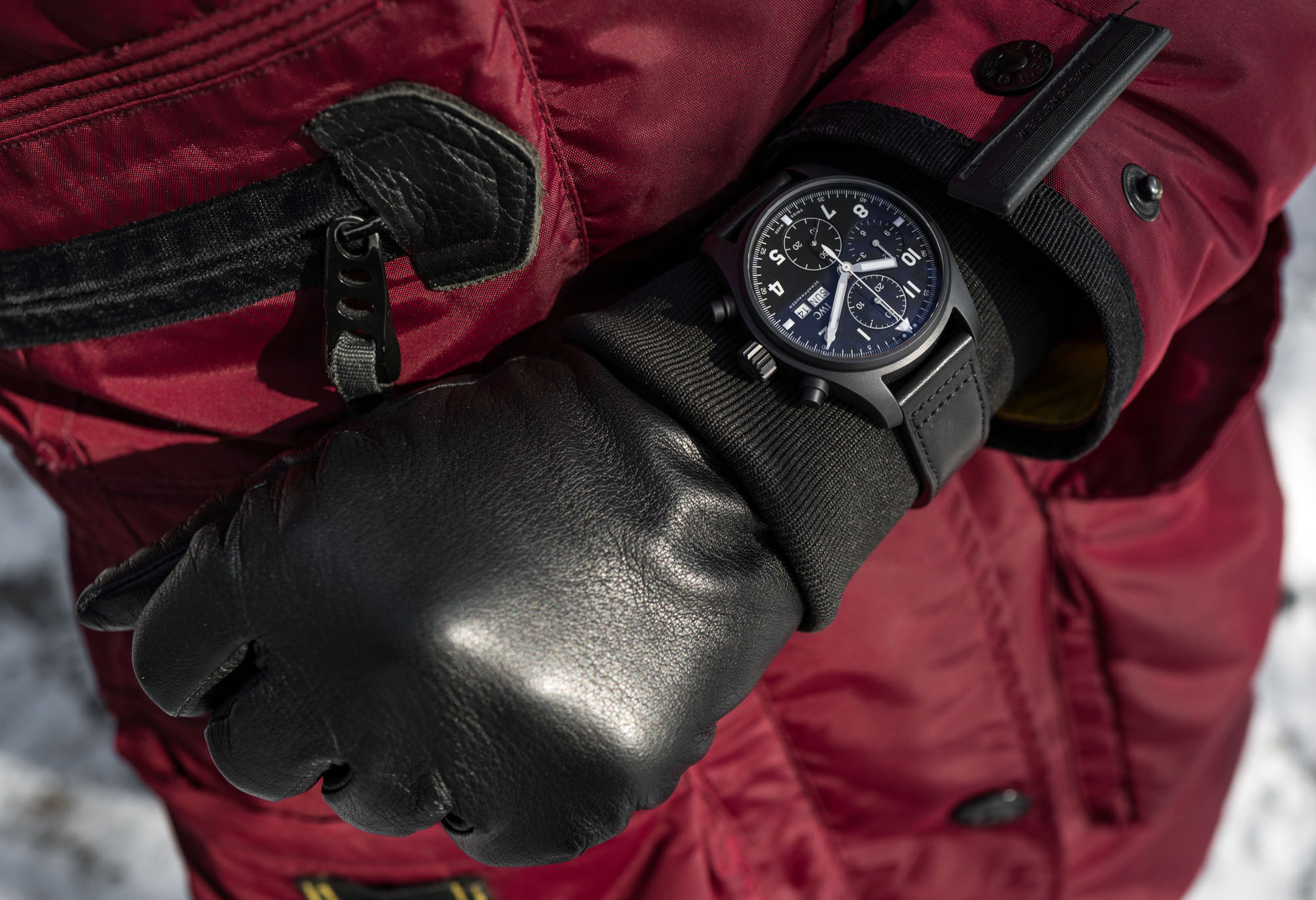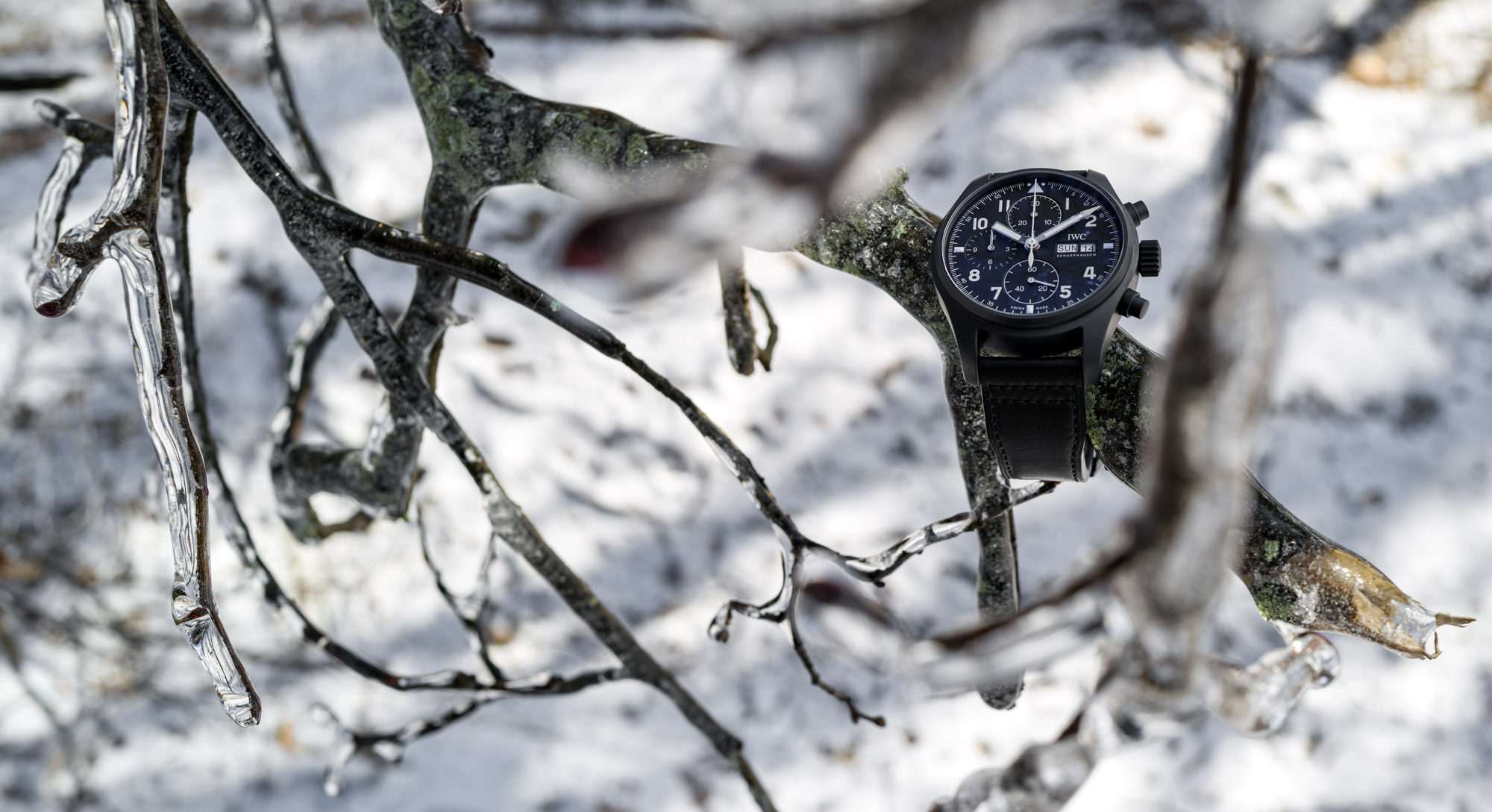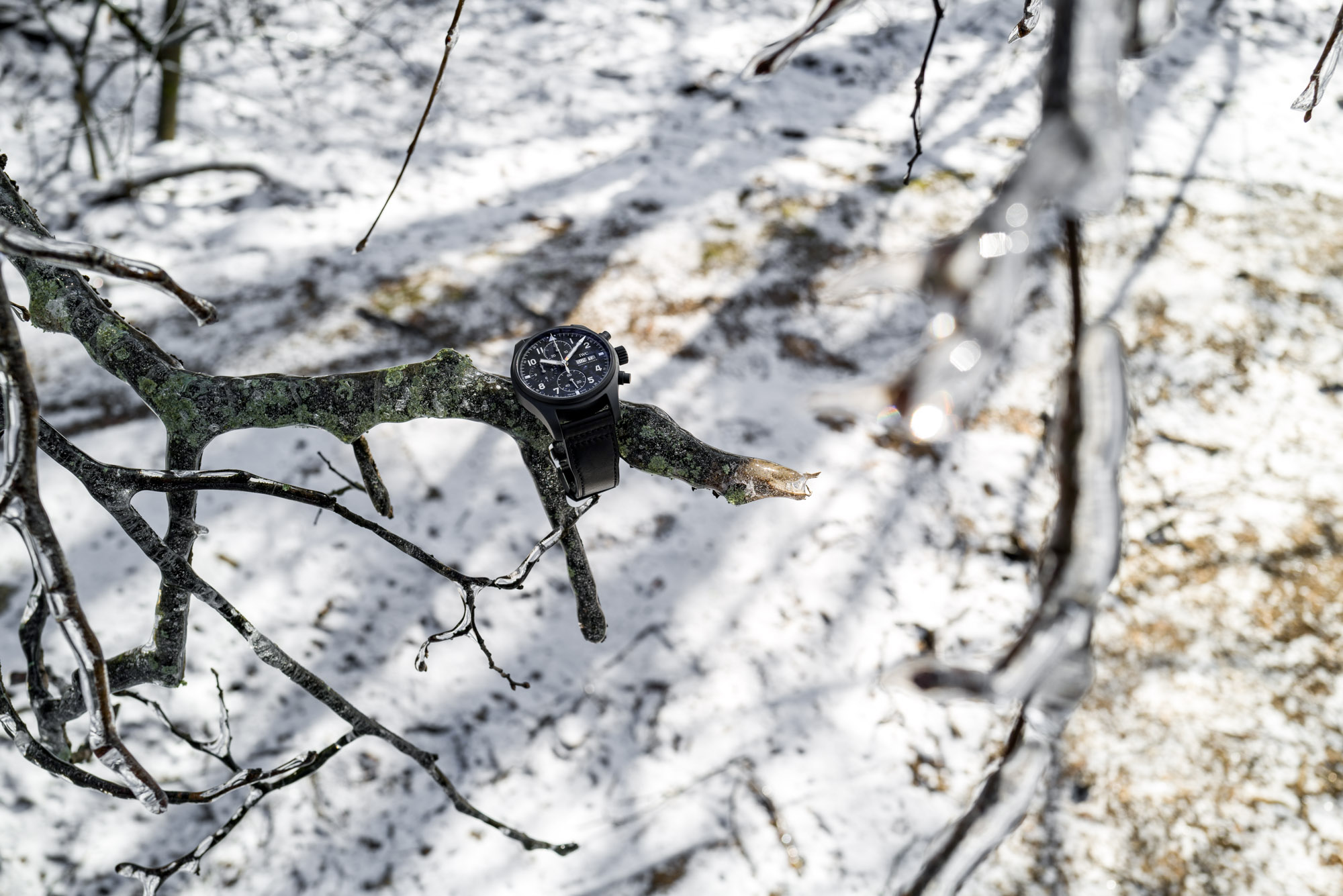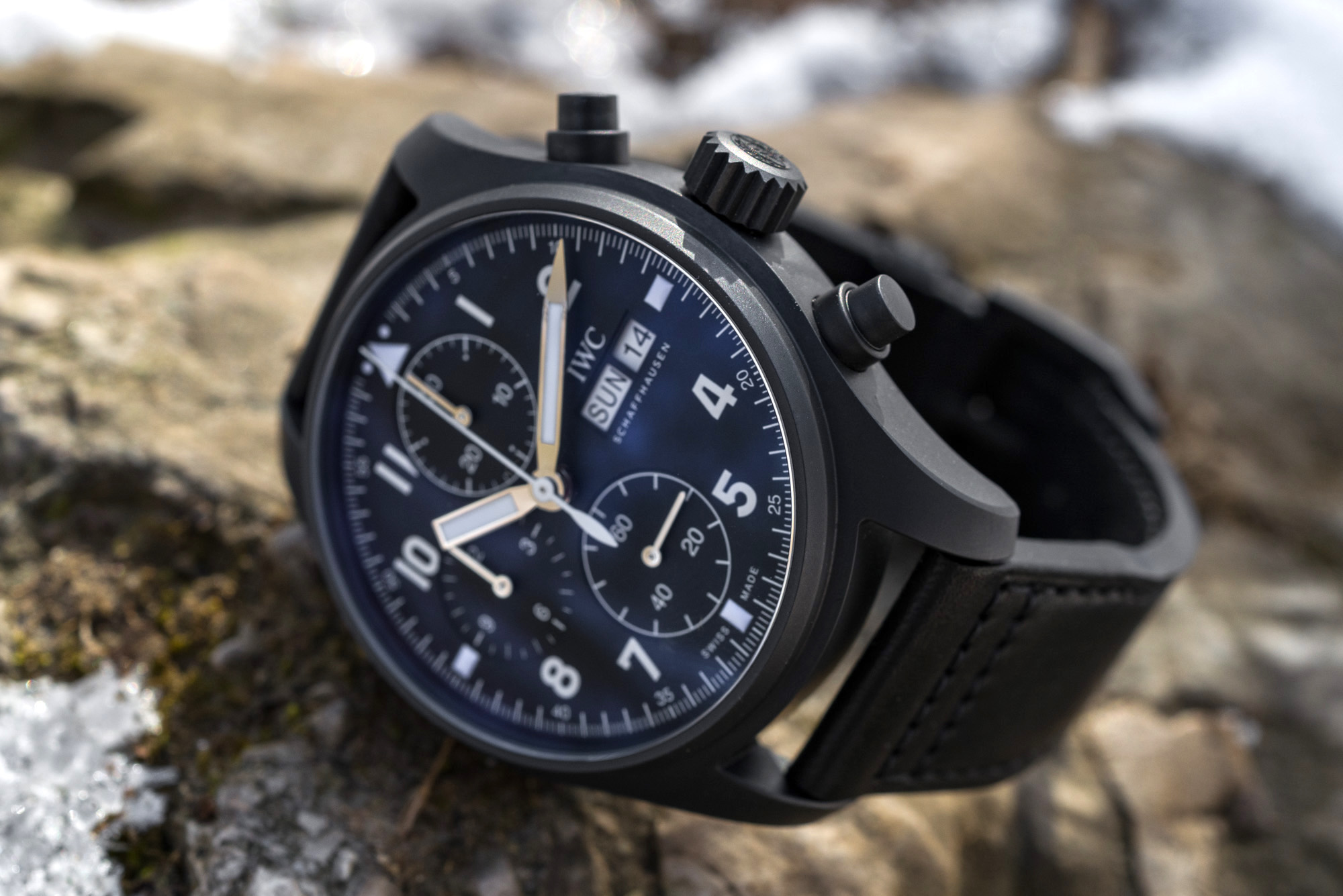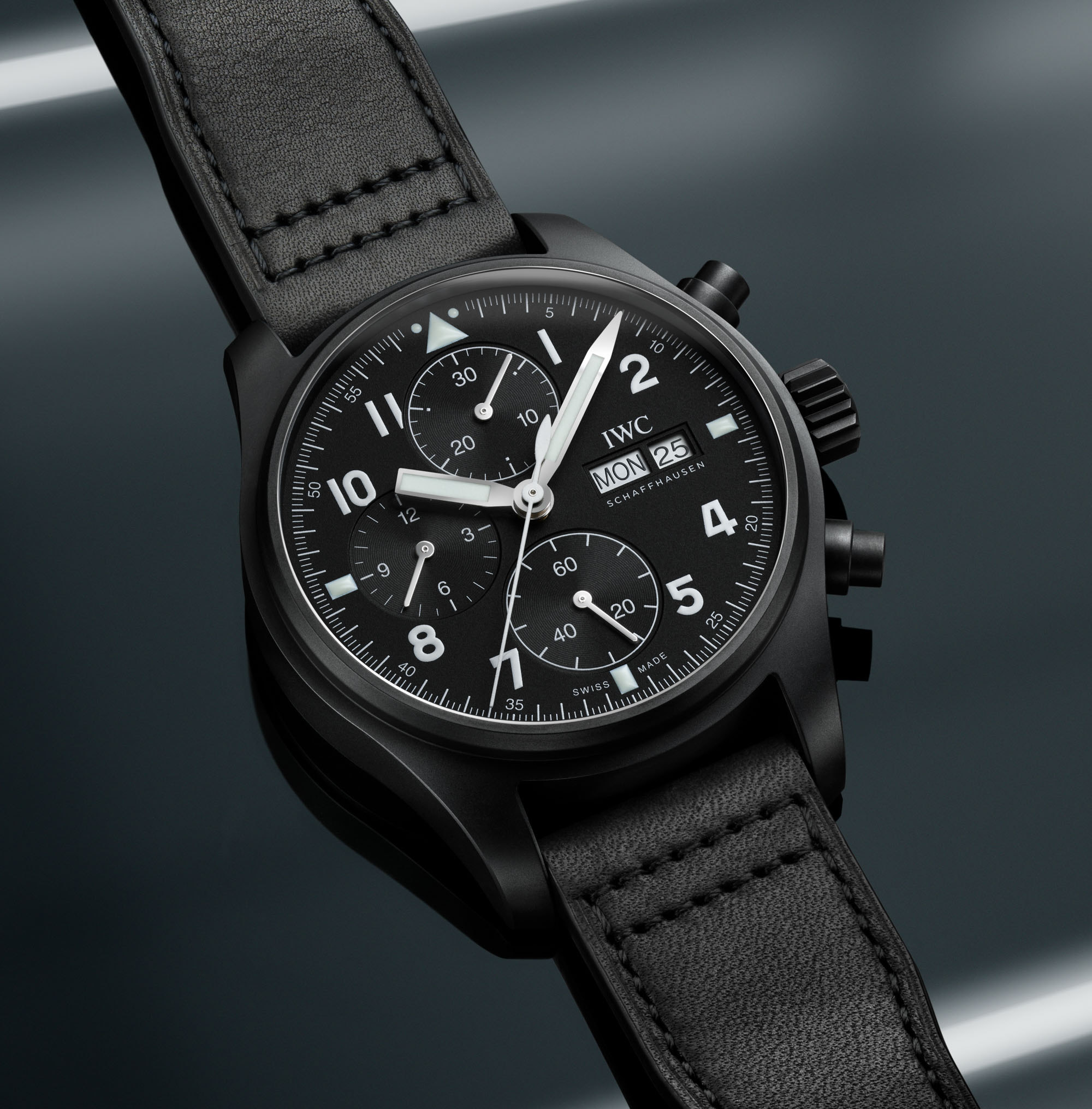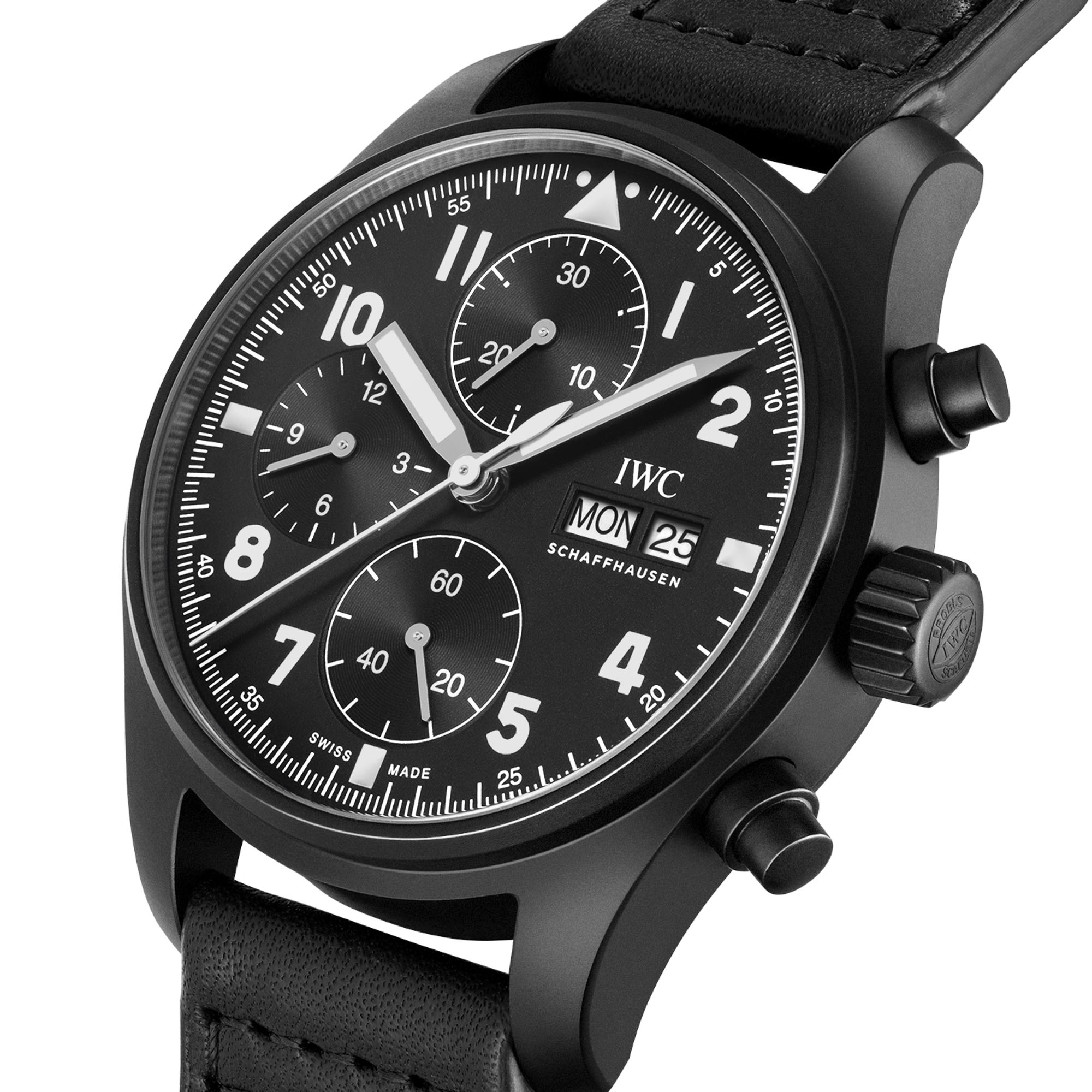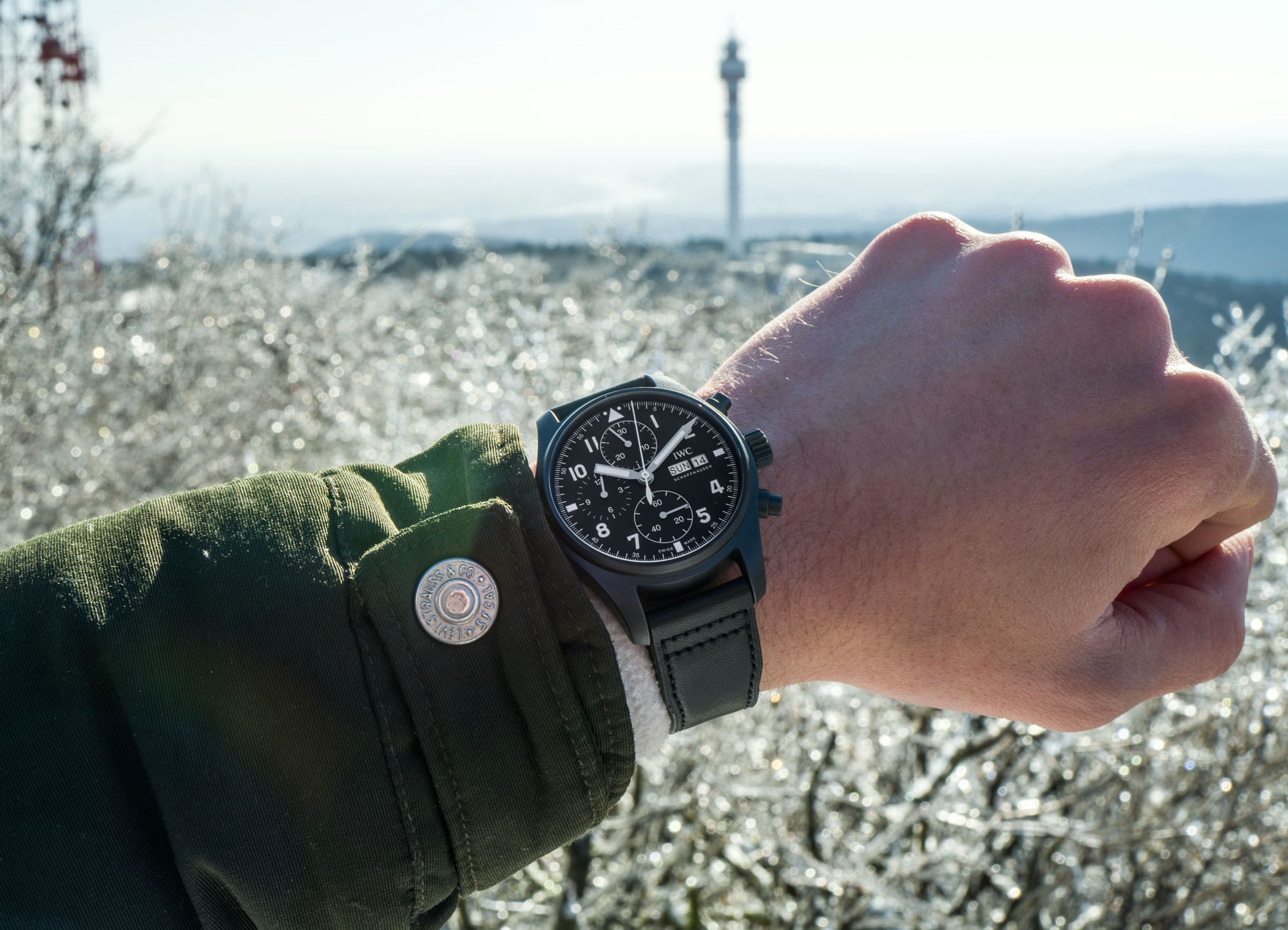
The original IWC Fliegerchronograph Keramik Ref. 3705 performed like a true stealthy pilot’s watch: It flew right under the radar of watch enthusiasts the world over. After a few years of just 1,000 examples navigating the IWC catalogs, the 3705 disappeared on the horizons, only to now re-appear in the form of the IWC Pilot’s Watch Chronograph Edition “Tribute To 3705.” And that’s the watch we have in for review for you today.
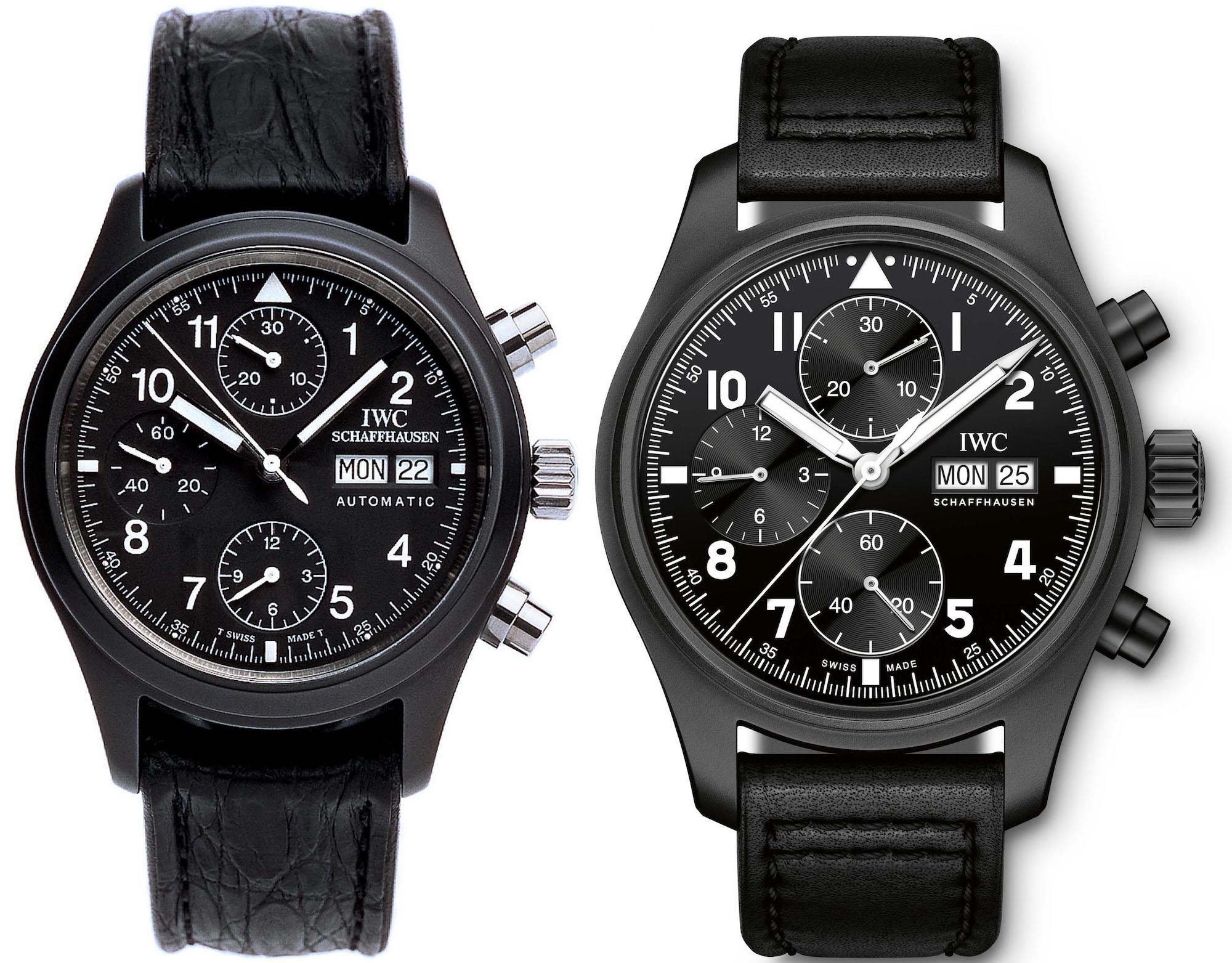
What Was The IWC Reference 3705?
The IWC Reference 3705 was IWC’s first Pilot’s Watch in black zirconium oxide ceramic. That novel and early use of black ceramic, and the fact that it has gone under without anyone really recognizing it for what it was, renders it quite a fascinating watch. Its stainless steel equivalent, the IWC Ref. 3706 (to which our Bilal Khan addressed a beautiful obituary here) and its subsequent iterations have carried on the compact pilot’s watch theme, but there had not been a true continuation of the black Fliegerchronograph until just now, with the launch of IWC reference IW387905. Yeah, this one is going to be heavy with reference numbers.
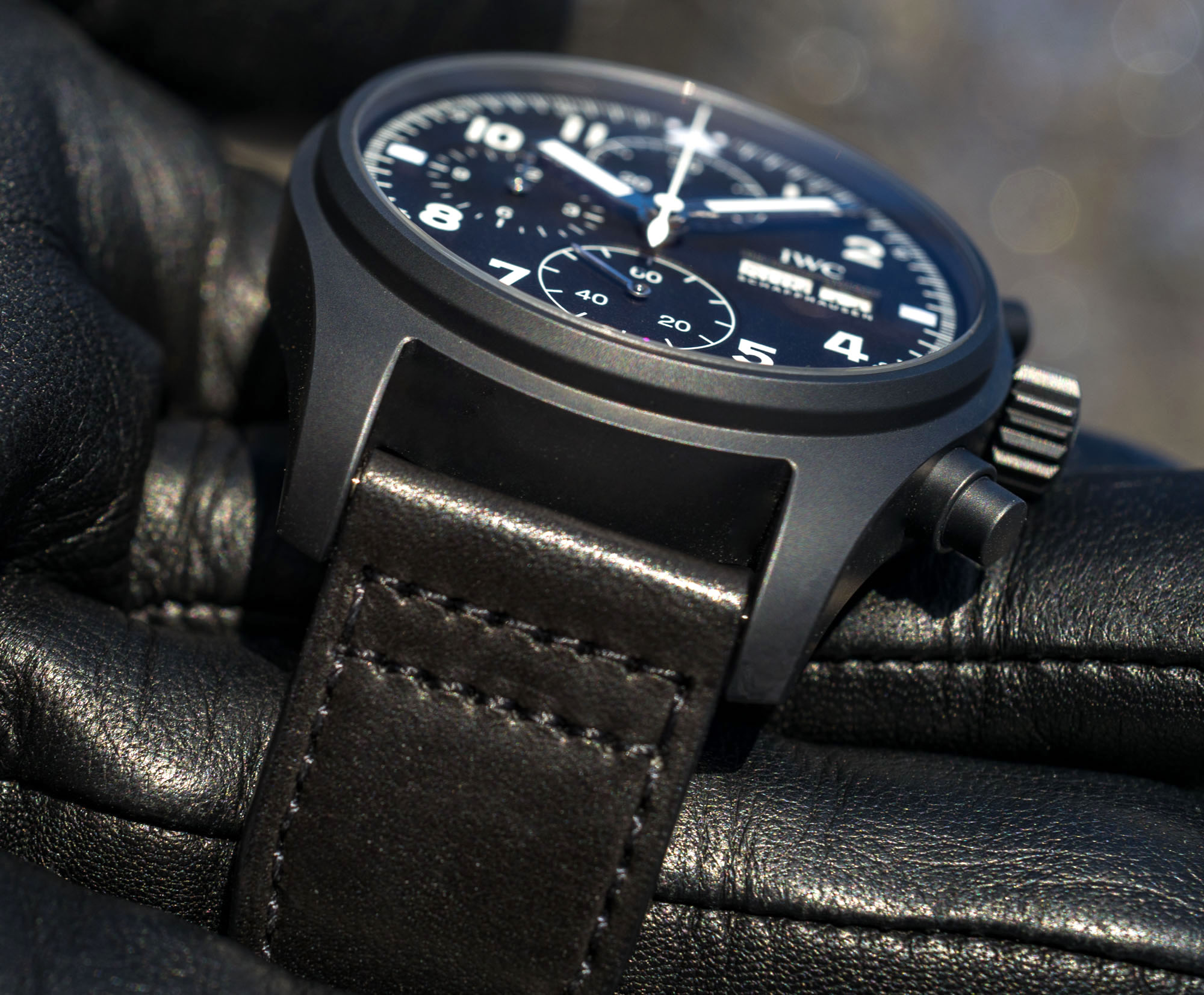
You see, even for a brand whose portfolio is enviably rich in pilot’s watches – just think of the WW II Beobachtungsuhr, the post-war Mark XI, or the modern Big Pilot of 2002 – the IWC 3705 stands out as a contemporary rendition of a superbly executed tool watch, made for ordinary people like you and me, but inspired by folks flying blocks of metal through the air over the speed of sound. As far as poseur-military watches go, the 3705 was it.
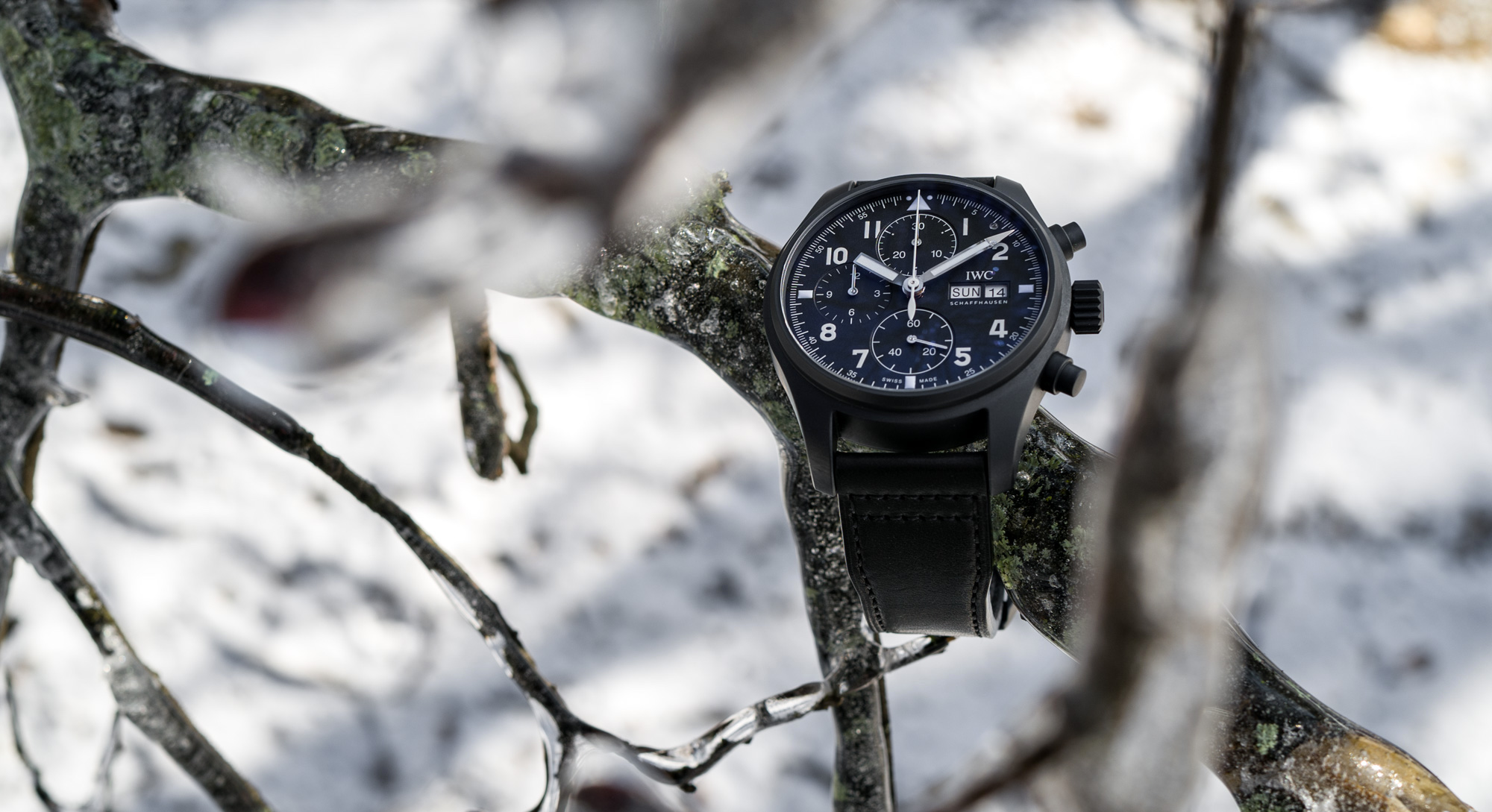
Quirks & Features Of The IWC Pilot’s Watch Chronograph Edition “Tribute To 3705”
The new IWC Pilot’s Watch Chronograph Edition “Tribute To 3705” is not an exact replication of the 1994 original. Why? Interestingly, IWC still offers watches with ceramic cases (there are four such watches in this range at the moment, all belonging to the Pilot’s Watch collection), and IWC still uses the SW500 caliber with a day-date display that is basically the Sellita equivalent of the Valjoux 7750 that powered the 3705. So, from the looks of things, the Tribute To 3705 could have been a more or less exact copy of the original – but I’m happy it isn’t. For the most part.
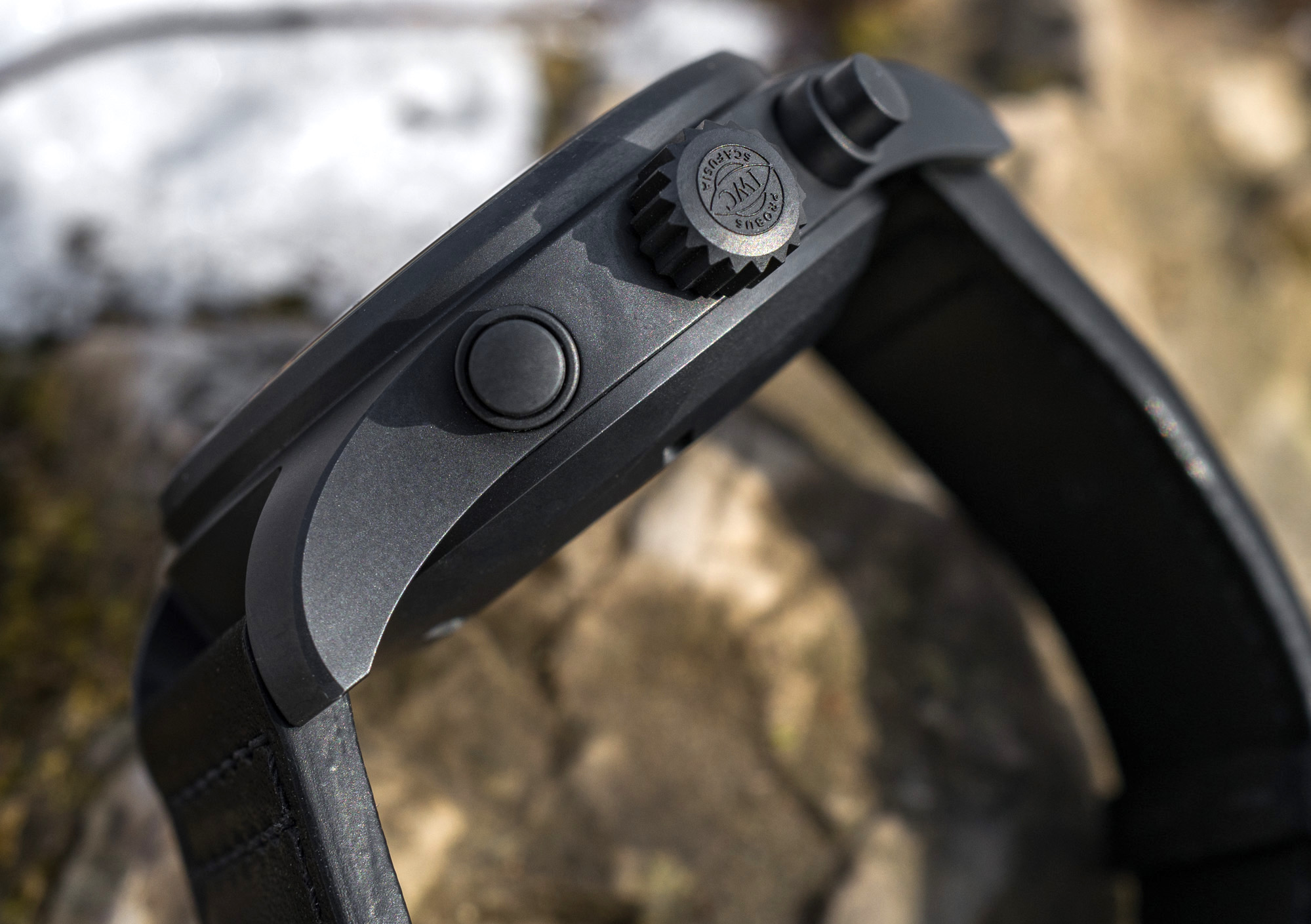
The IWC Pilot’s Watch Chronograph Edition “Tribute To 3705” noticeably differs in the case material, case size, and movement, as well as some of the dial details used.
The case for the IWC Tribute To 3705 is not ceramic but Ceratanium®,
an IWC-developed material that does not contain any ceramic. Let’s wrap our minds around that. Ceratanium watch parts are crafted from a block of what IWC calls a “special titanium alloy.” This alloy has no ceramic particles mixed into it at any stage of production. The components are first machined from this block of titanium and then have their surface treatments performed as well. In the case of the IWC Pilot’s Watch Tribute To 3705 this core titanium case has been evenly sandblasted – creating what likely is the most ideal porous surface on which the ceramicized layer can develop.
Interestingly, this entails a rather rare monoblock design for the case of this 2021 IWC novelty, where the bezel and the middle-case are one piece that appears to have been machined from the same block. This block of titanium is placed into a furnace that’s heated to an undisclosed temperature and is held there for an undisclosed (secretly held) period of time. When the immensely hot block of metal re-emerges from the furnace, its top layer has “turned into a ceramic,” according to IWC’s Dr. Lorenz Brunner, from IWC’s Research & Innovation department.
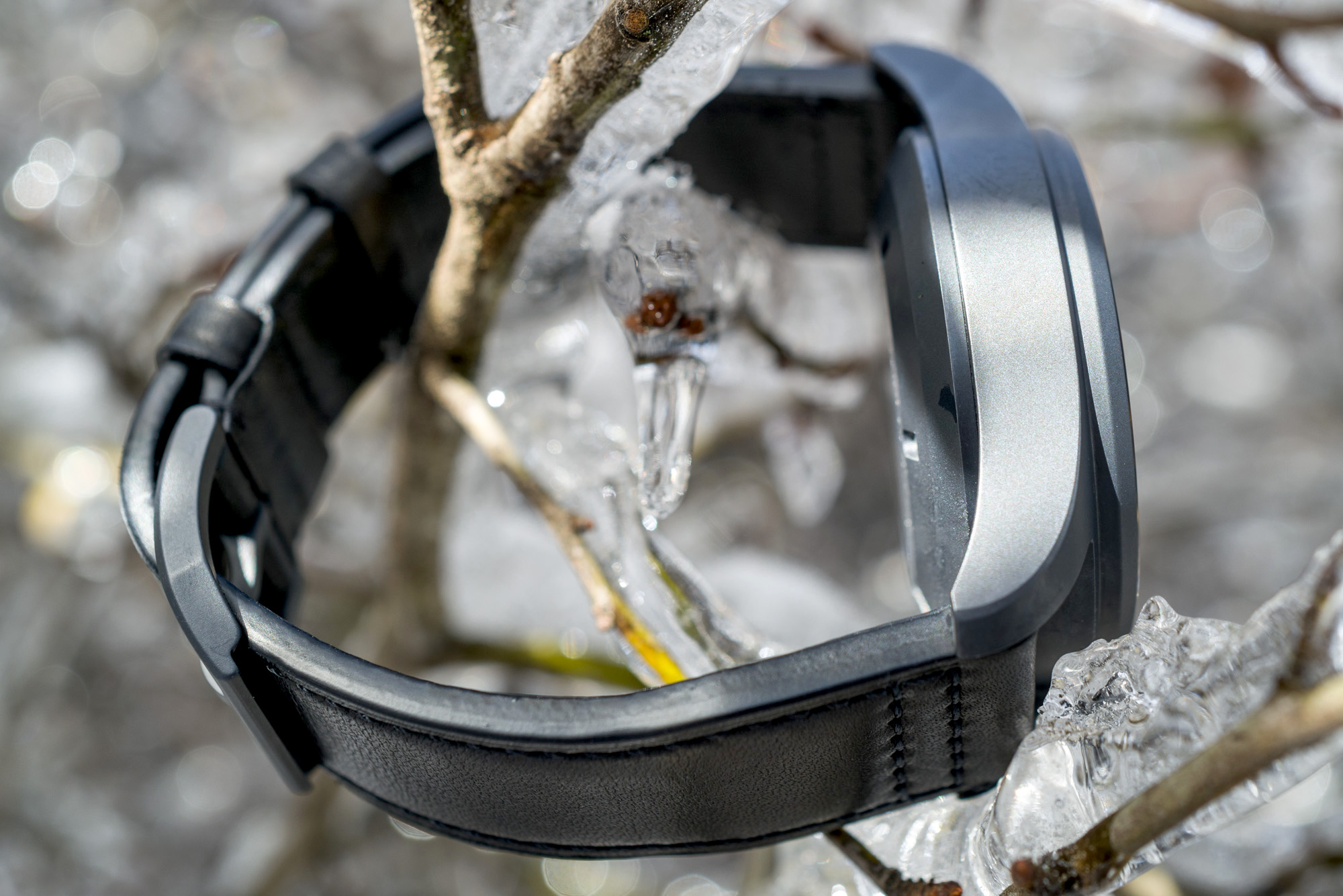 The end result is a surface that, to me, feels like matte glass. It even makes the same smooth, higher-pitched sound like glass does when you pull your finger over it to get a sense of its surface. IWC claims Ceratanium® is light and robust like titanium but is similarly hard and scratch-resistant like ceramic. In my personal experience, ceramic is not any more fragile than titanium or gold – if you exert such forces on a ceramic case that it shatters, the same forces will no doubt irreparably destroy your titanium or gold cased watch, too. Maybe those won’t break, but they won’t be saved by a bit of polish either.
The end result is a surface that, to me, feels like matte glass. It even makes the same smooth, higher-pitched sound like glass does when you pull your finger over it to get a sense of its surface. IWC claims Ceratanium® is light and robust like titanium but is similarly hard and scratch-resistant like ceramic. In my personal experience, ceramic is not any more fragile than titanium or gold – if you exert such forces on a ceramic case that it shatters, the same forces will no doubt irreparably destroy your titanium or gold cased watch, too. Maybe those won’t break, but they won’t be saved by a bit of polish either.
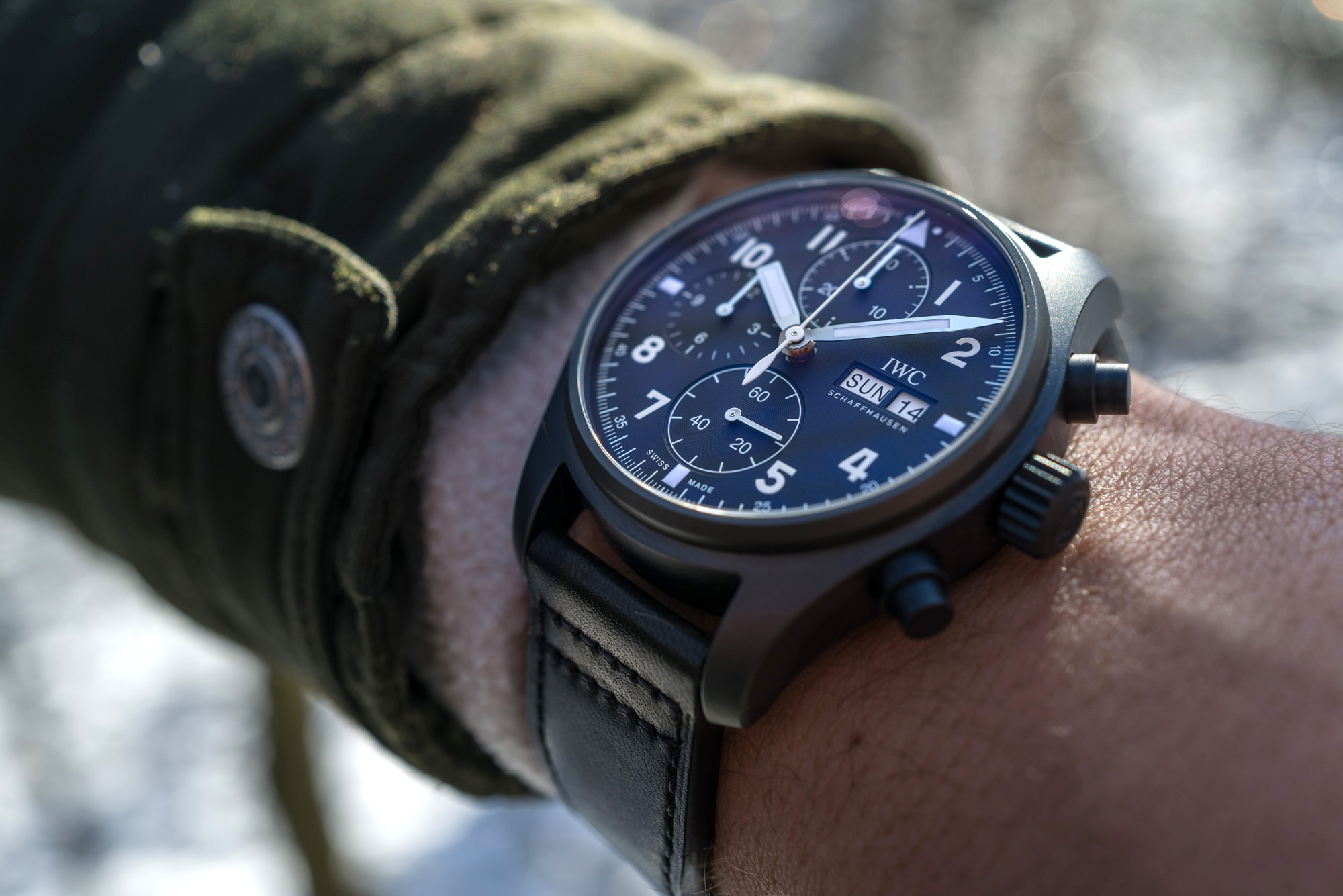
But I digress. The 41mm-wide Ceratanium® cased IWC Tribute To 3705 is, indeed, appreciably light and appears to have the likable thermal attributes of titanium – meaning that it isn’t an ice-cold hockey puck on the wrist like a steel watch can be when wearing it in the cold. Its 15.3mm thickness is also neatly disguised by the reduced weight and the comfy calfskin strap. The matte black surface resulting from the sandblasting and heating treatments looks refined and reasonably expensive. It is no Zaratsu, but it definitely doesn’t look cheap or achingly simplistic either. IWC has even managed to maintain a small beveled edge that runs down the edge of the lugs – it’s only visible in the right kind of light, but when it is, it sure is a treat.
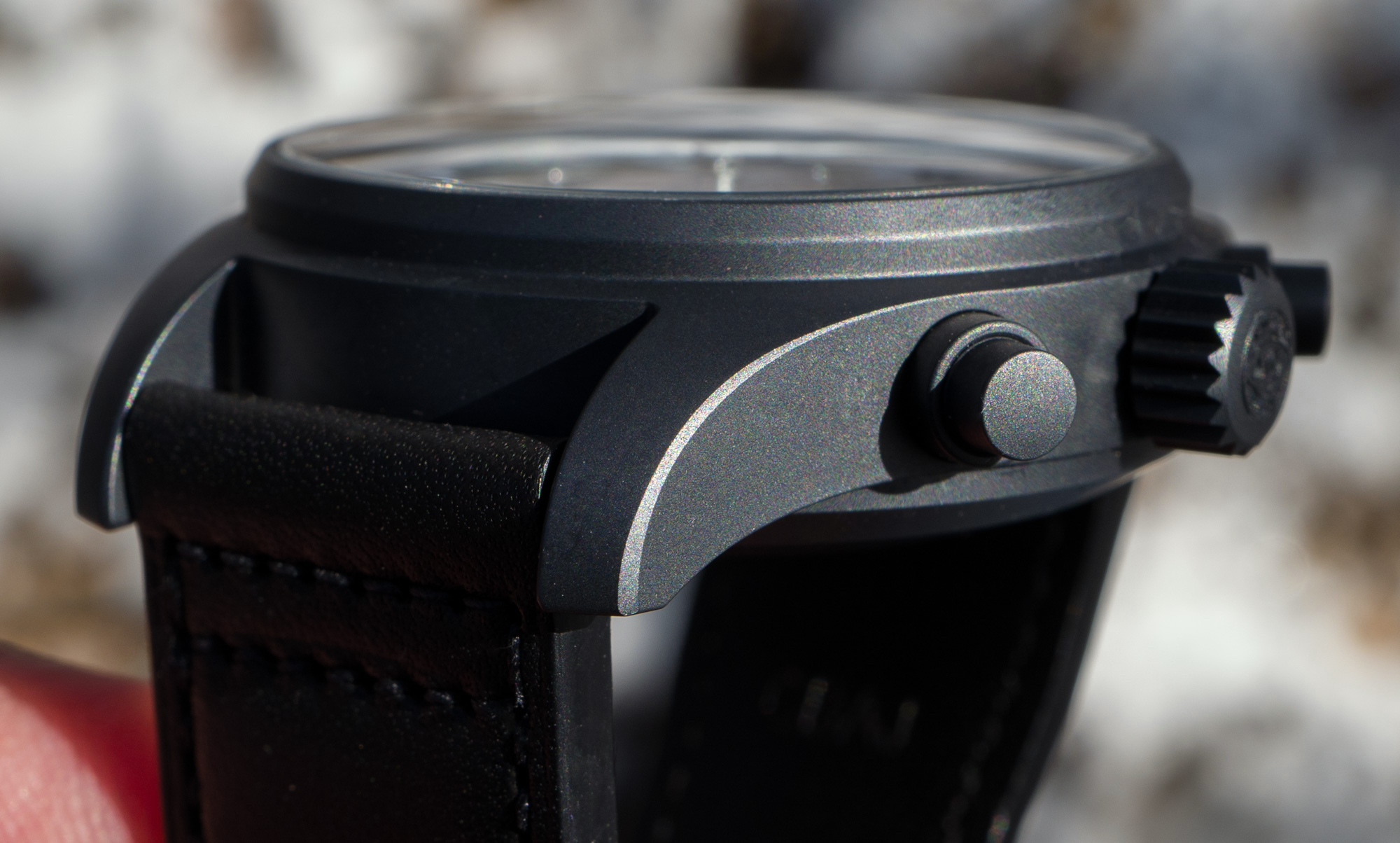
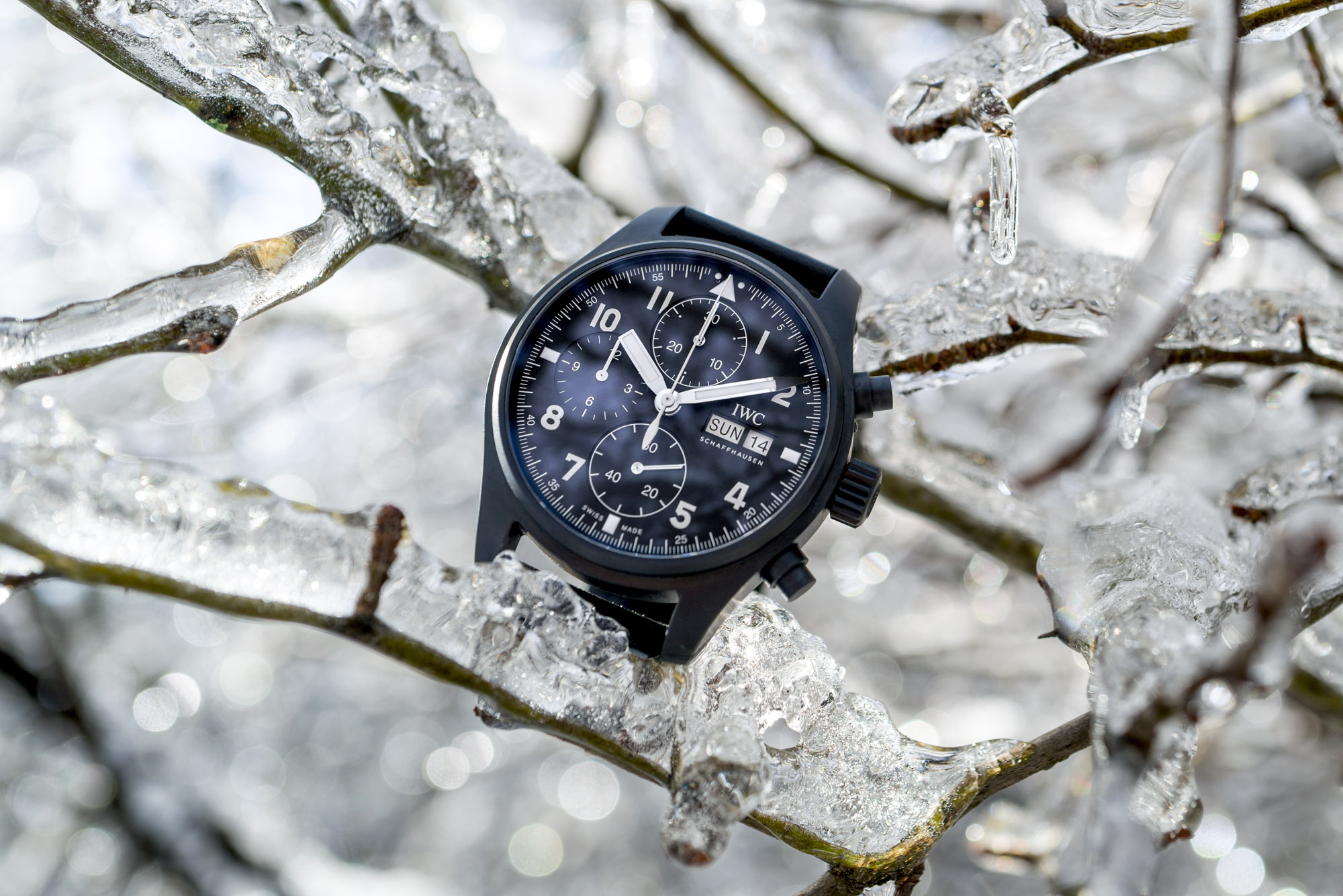
Although the sapphire crystal on the front has anti-reflective treatment on both sides, in some situations it still appears a bit too reflective. Maybe it’s just me, but on a watch like this, frankly, I want to feel like I can poke at the dial directly because the crystal is so invisible. A very-IWC thing worth mentioning is this little detail in the spec sheet: the sapphire crystal is “secured against displacement by drops in air pressure.” As useless this feature is in my non-fighter-pilot life, it’s this attention to detail that separates a pilot-watch-looking-watch from a Pilot’s Watch my fighter-pilot-wannabe self appreciates. It’s like this Remove Before Flight red tag on my backpack that I got when visiting the Martin-Baker ejection seat factory – I love reflecting on where that item actually belongs.
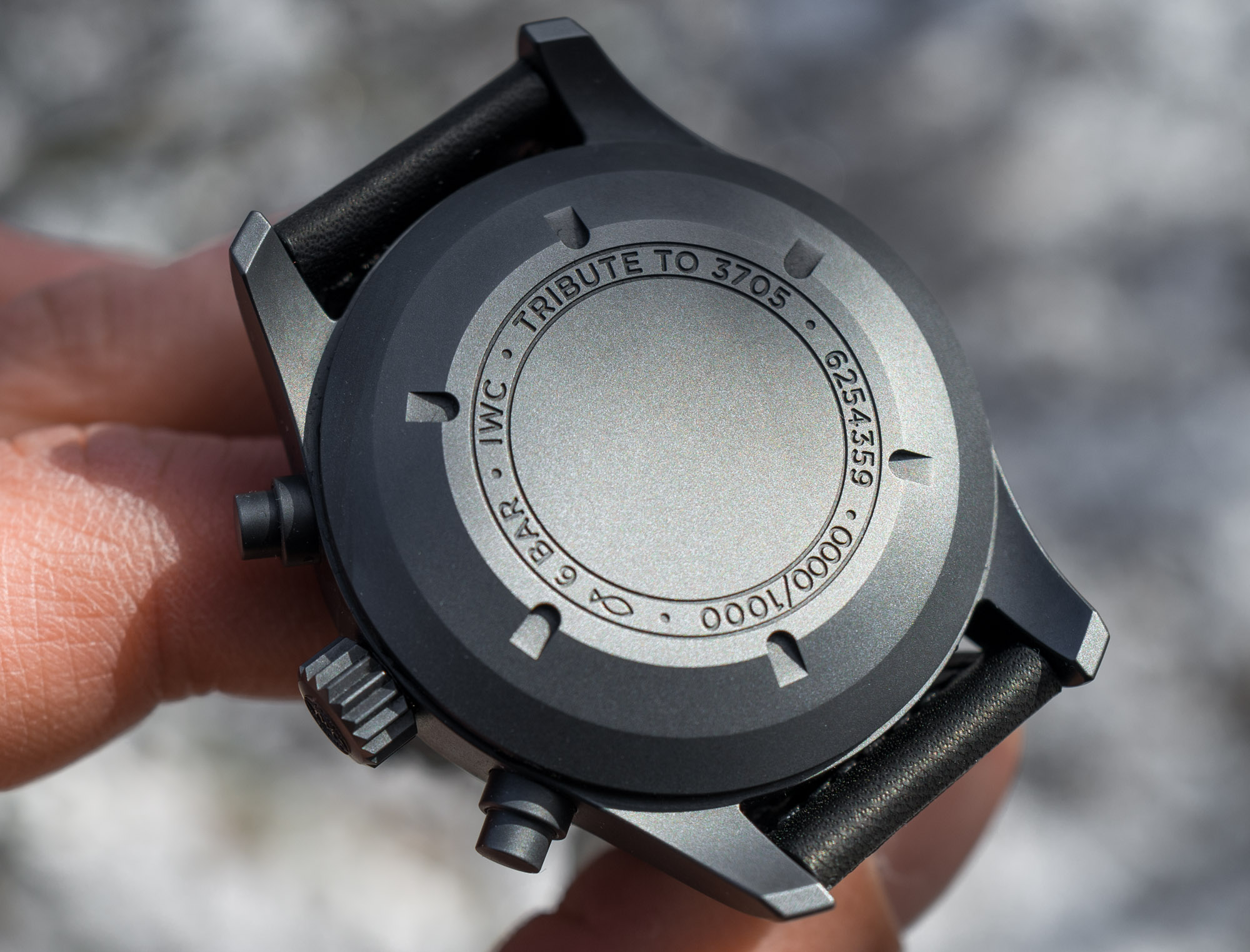
The movement inside the IWC Pilot’s Watch Chronograph Edition “Tribute To 3705” is the IWC manufacture caliber 69380. This is superior to the 7750 not just by its in-house status, but because it offers a column wheel (in place of the cam-actuation system in the 7750) and combines that with a bi-directional pawl winding system for efficient re-winding. Still, the IWC 69380 was designed to seamlessly replace the 7750 in many IWC references, and so it had to have the same diameter, thickness and overall construction – while introducing the aforementioned improvements. For this reason, power reserve remains 46 hours matched to a 4 Hertz operating frequency – this is shorter than what many of its direct competitors by Omega, TAG Heuer and Zenith offer.
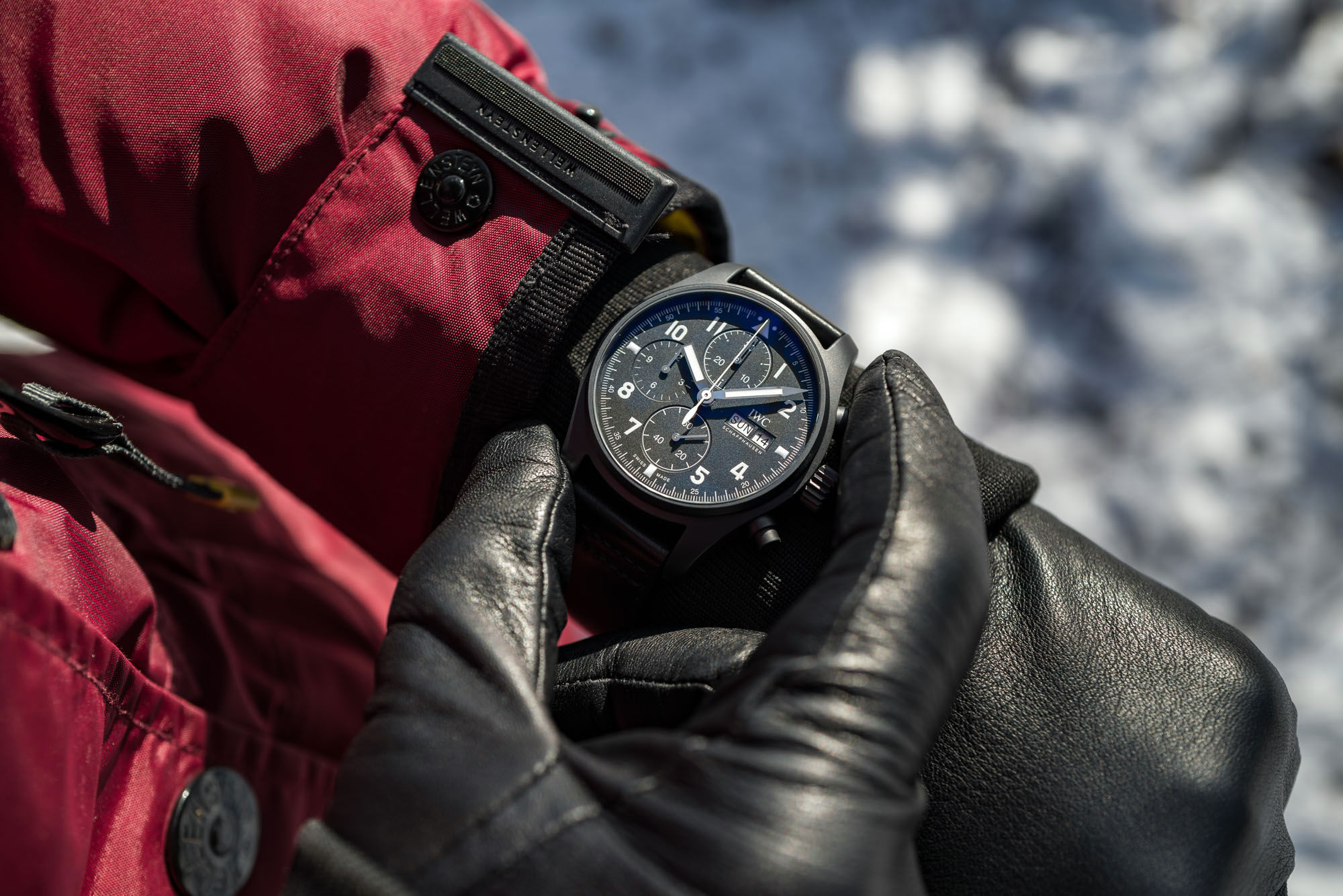
On the plus side, a bit of pusher travel is followed by a solid click (a column wheel trait) and the operation of both the escapement and the self-winding system is among the quieter ones out there when the watch is on the wrist. Luxury watches that whir every time you lift your hand next to your head are just not OK. The soft iron case that shields the movement from magnetic fields certainly helps with that.
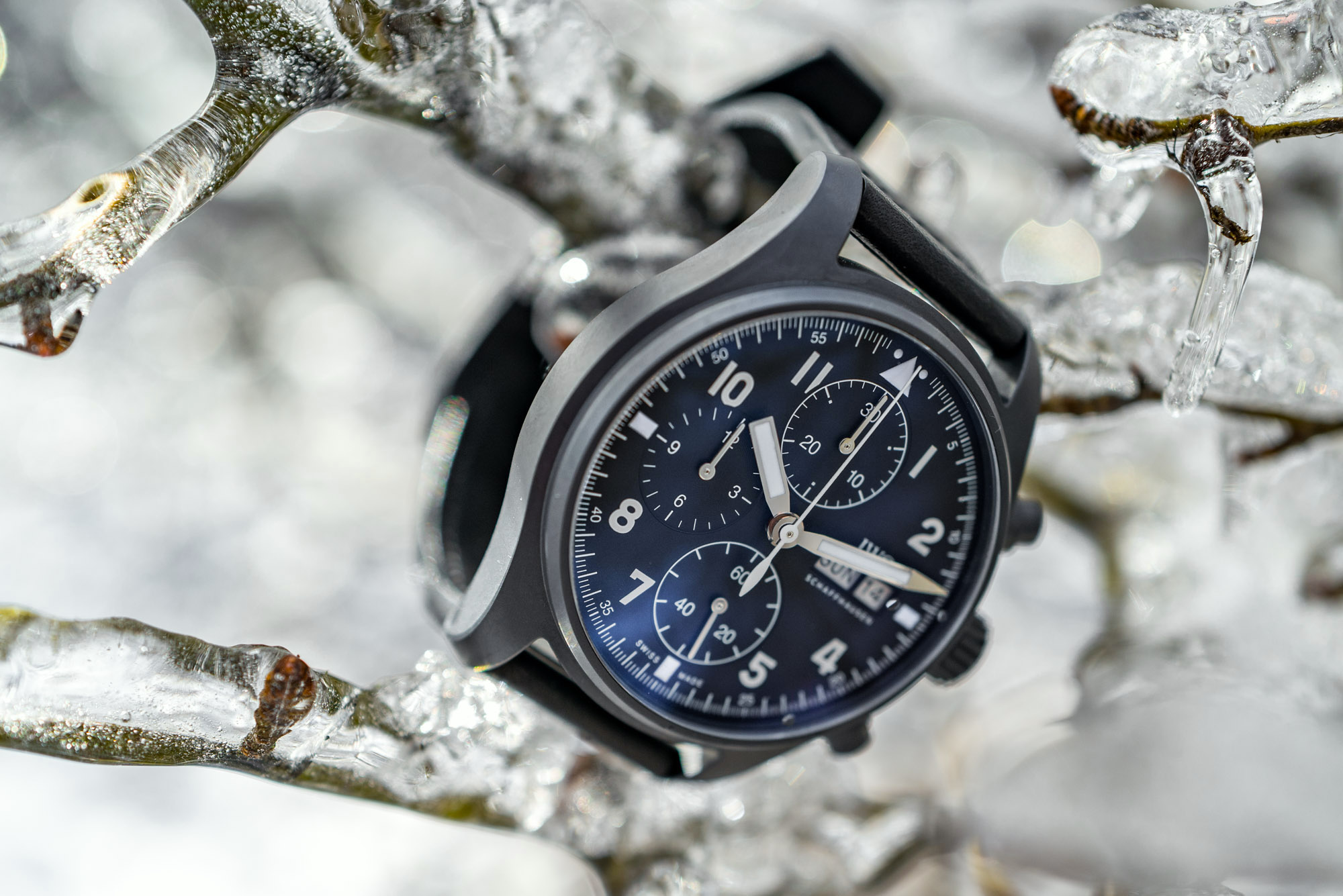
Moving on to the dial of the IWC Pilot’s Watch Chronograph Edition “Tribute To 3705,” we find a nerdy quirk that comes from the novel use of the 69380 caliber in place of the 7750. How so? Well, the 7750 base caliber that powered the 3705 had the following sub-dial layout: chronograph 12-hour counter at 6 o’clock, 30-minute counter at 12 o’clock, and running seconds at 9 o’clock. By contrast, the new Tribute To 3705 has the running seconds at 6 o’clock, so the two chronograph subdials are no longer on a vertical plane but are next to each other at 9 and 12.
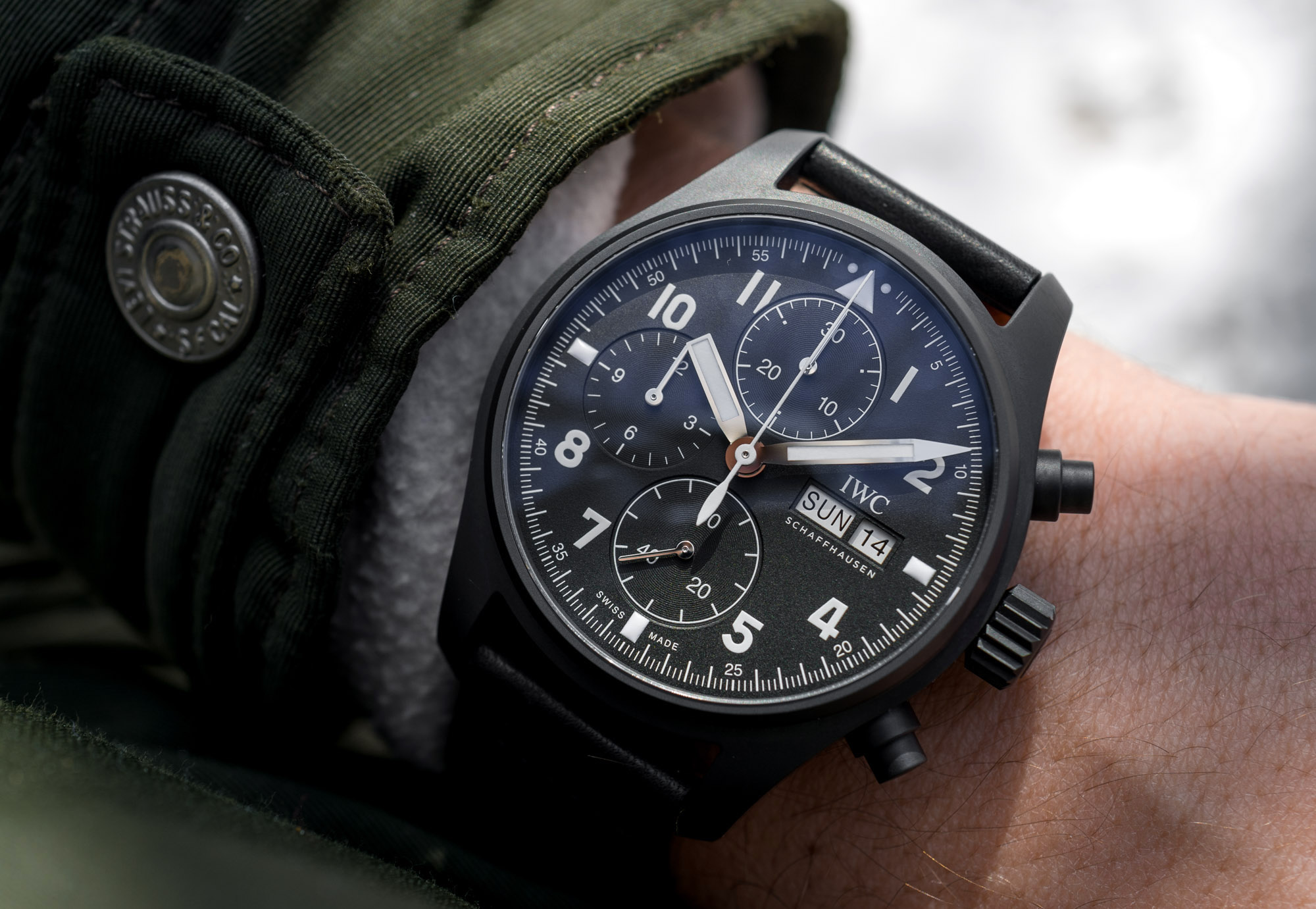
Oddly, IWC has maintained the white frames around the 12 and 6 sub-dials – a design element that, on the original, was probably added to help visually differentiate the chronograph subdials from the running seconds. Now, however, it’s the running seconds at 6 and the chronograph 30-minute counter at 12 that are framed in white, visually connecting to functionally unrelated indications. I can’t help but think that the IWC of old, respecting the limitations of this movement layout and the role of these white visual differentiators, would’ve prioritized function over form and painted the 9 and 12 o’clock subdial frames in white. On the other hand, it is true that the current design maintains the beautiful verticality and balance of the dial and this watch — and it is as much a tool watch as it is an exercise in eye-pleasing aesthetics. Destroying this balanced dial design would have resulted in a watch that is a more authentic Pilot’s Watch but a less authentic tribute to the 1994 original. For this reason, I can respect the route IWC has taken.
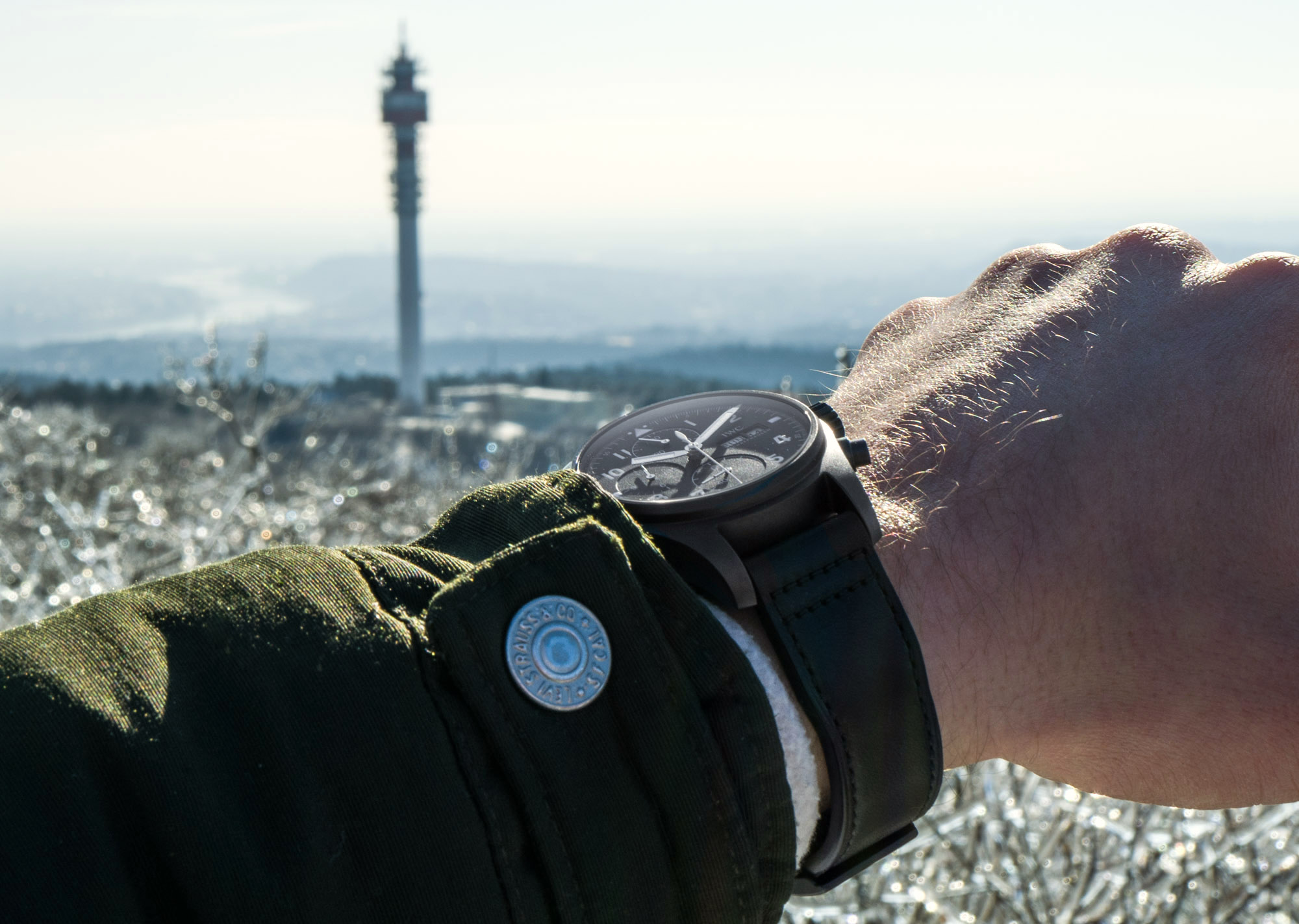
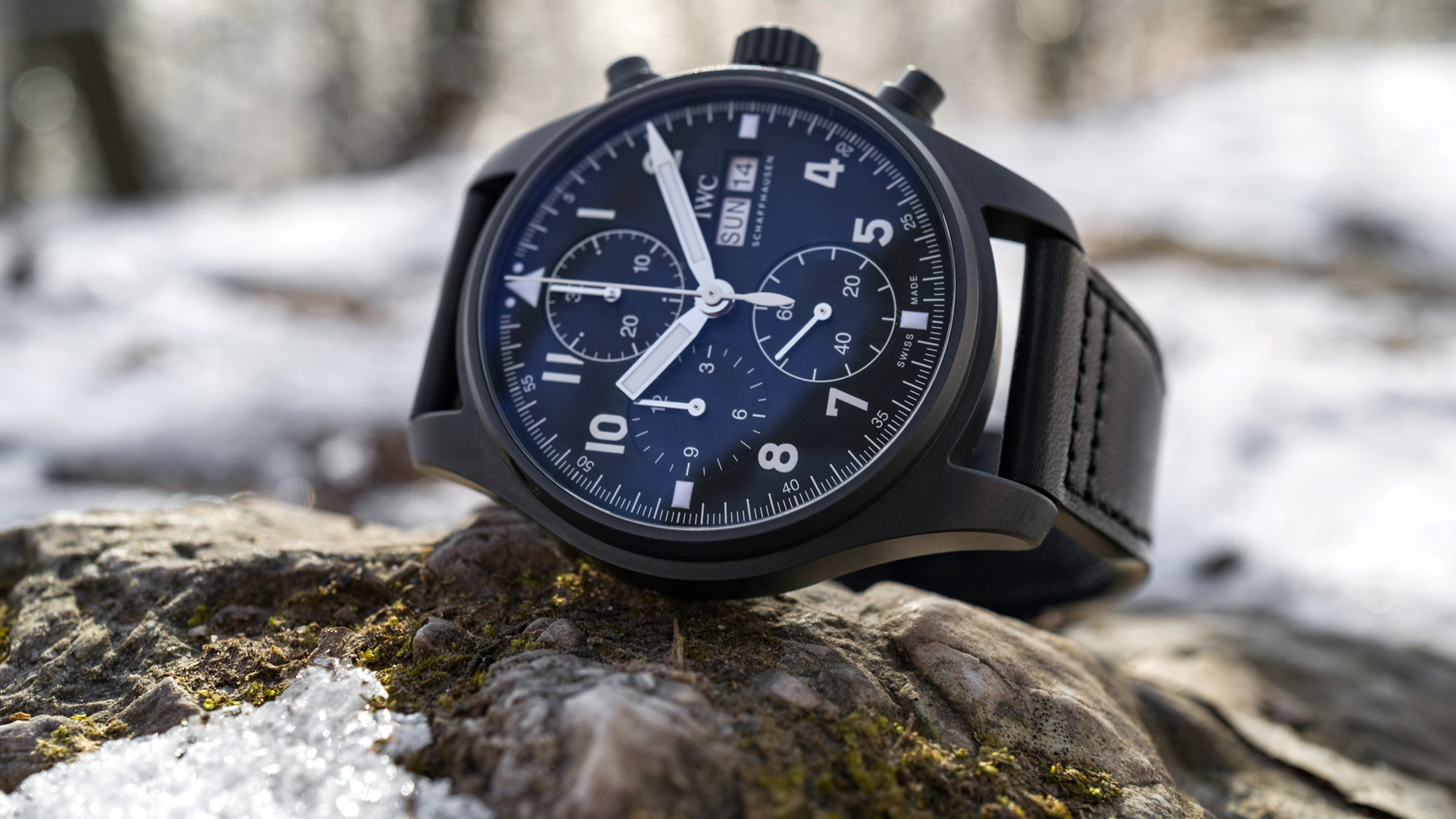
The same could be said for the chronograph hands: The central chronograph seconds hand is white, while the hands on the subdials are shiny rhodium, which, it is true, in some light appear to be white. At the end of the day, whether these small technical sacrifices to remain faithful to the original’s visual balance are preferable or not will go down to one’s personal preferences. What is certain is that these won’t keep a single one of the 1,000 individually numbered iterations of this handsome tribute from flying off the virtual shelves (see the final paragraph for pricing and availability details). But watch design is to be dissected and appreciated in these finer details.
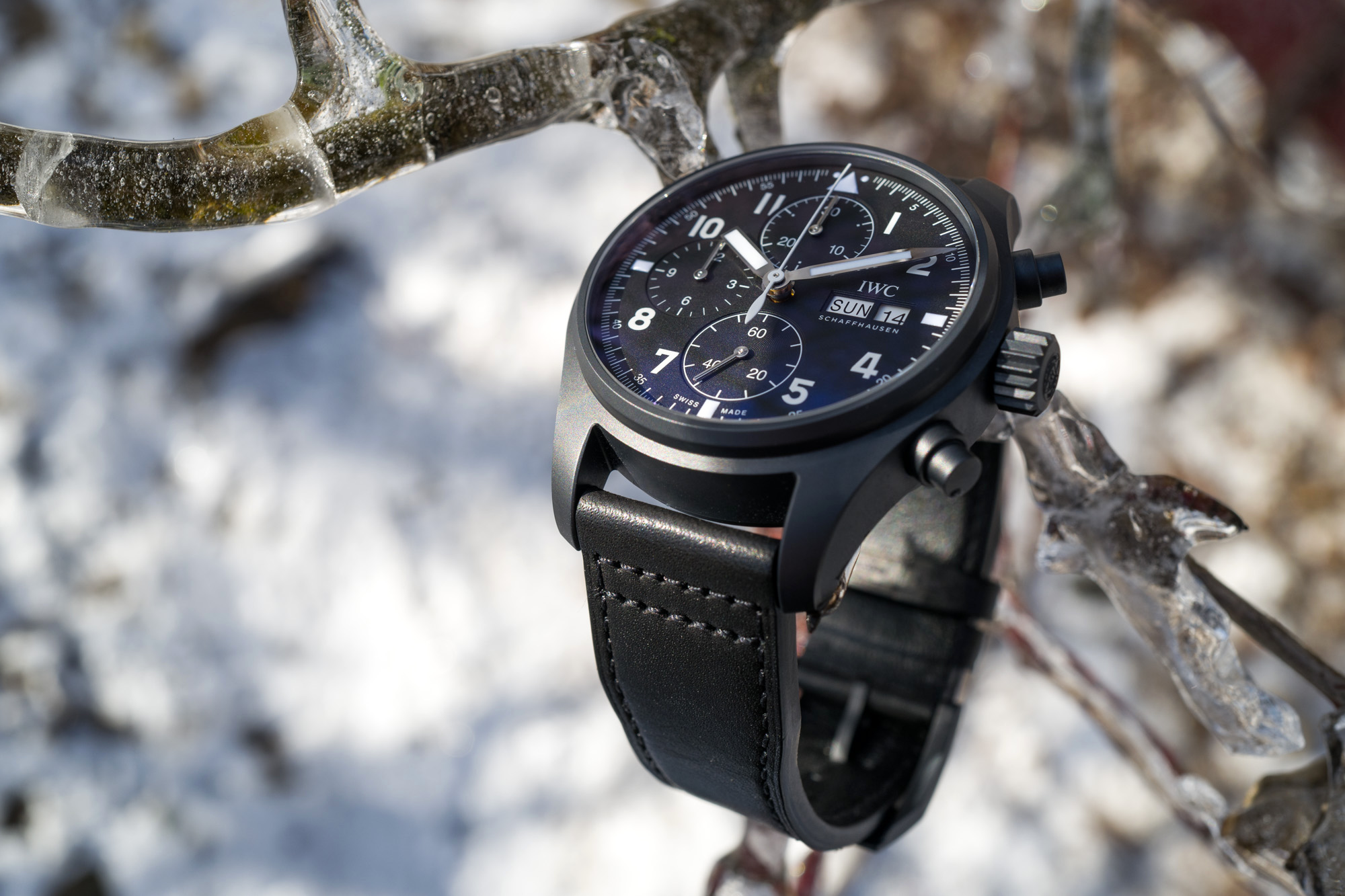
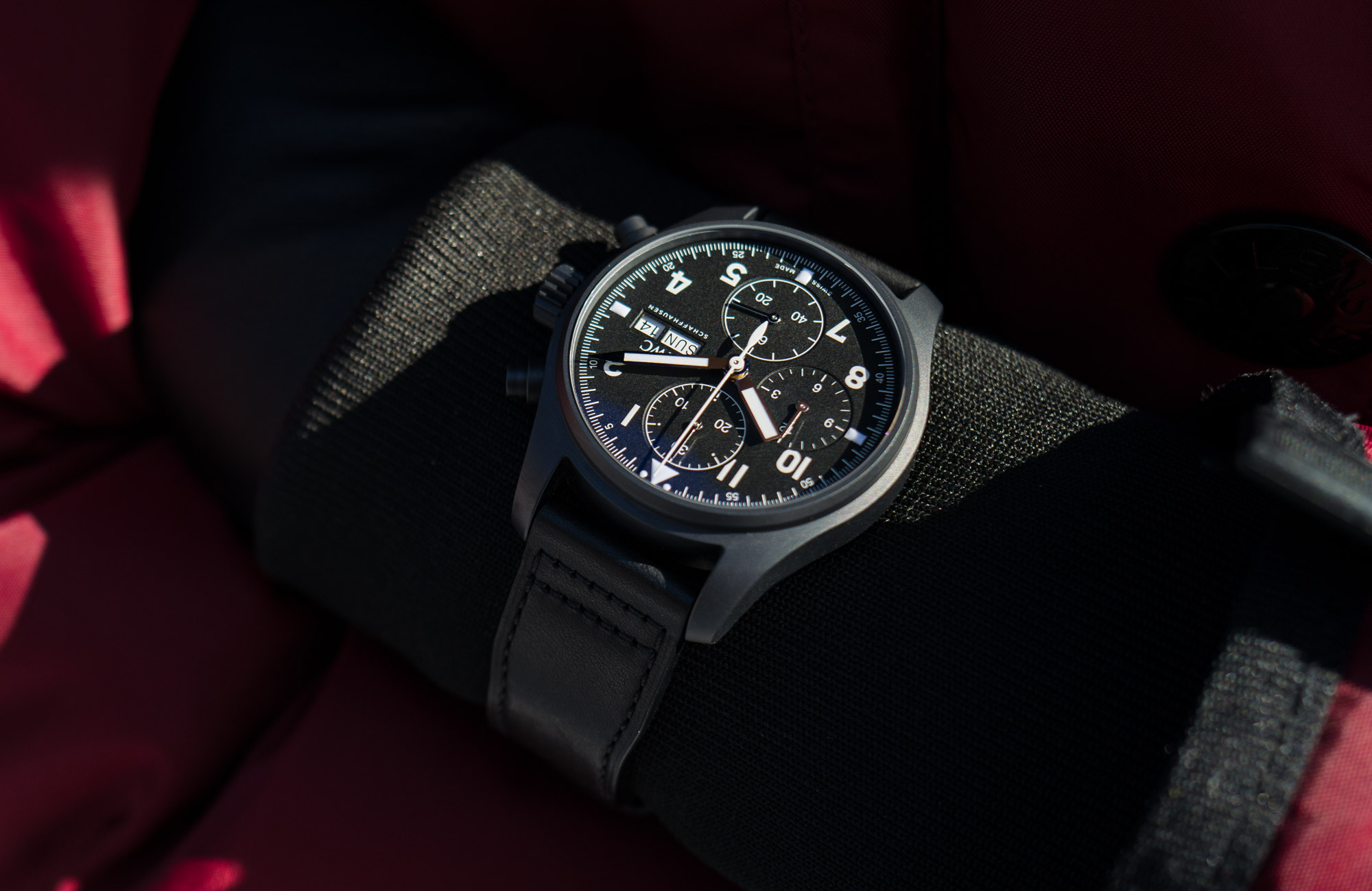
Moving onto positives, the Tribute To 3705 is the IWC chronograph that I reckon many out there have been waiting for – and one that, on a personal note, I am really forcing myself to stay strong and not get right now. On the wrist, despite some of its odd (but, at the end of the day, understandable) quirks, the IWC Pilot’s Watch Tribute To 3705 looks and feels like all the watch one would need for years or even decades of wear. It’s like a truly great leather jacket: as it ages with its owner it just becomes more authentic and, yeah, cooler, too. With its nicely moderated weight, glassy-smooth surfaces (not a sharp edge anywhere, not even on the underside of the lugs, which is a notable omission on the majority of luxury watches these days), hard-wearing materials, and beautifully balanced design, it is a deeply and immediately likable exercise in IWC-ness.
Right out of the box, there is something evidently cool and purposeful about it in a very specific way that only IWC gets right.
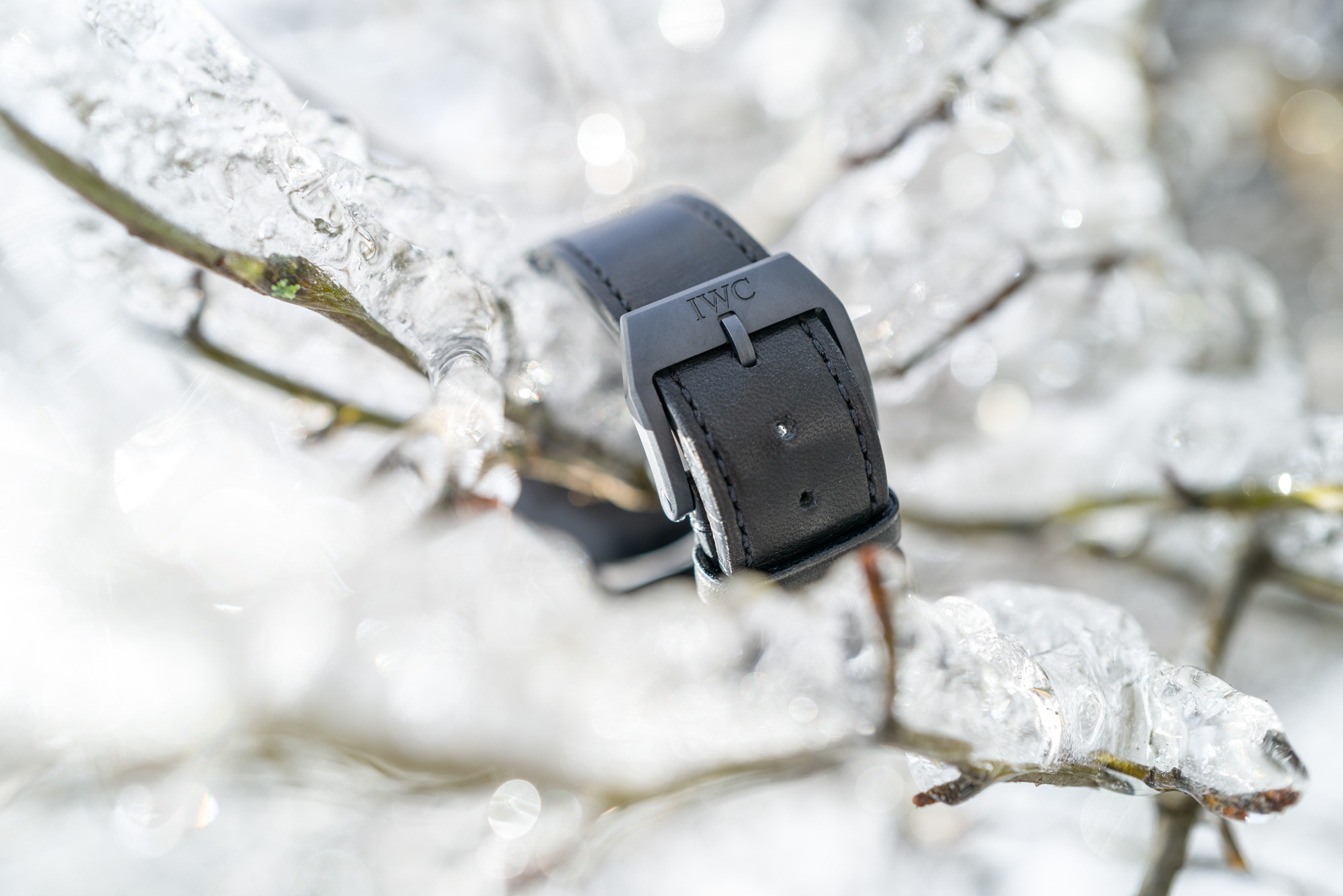
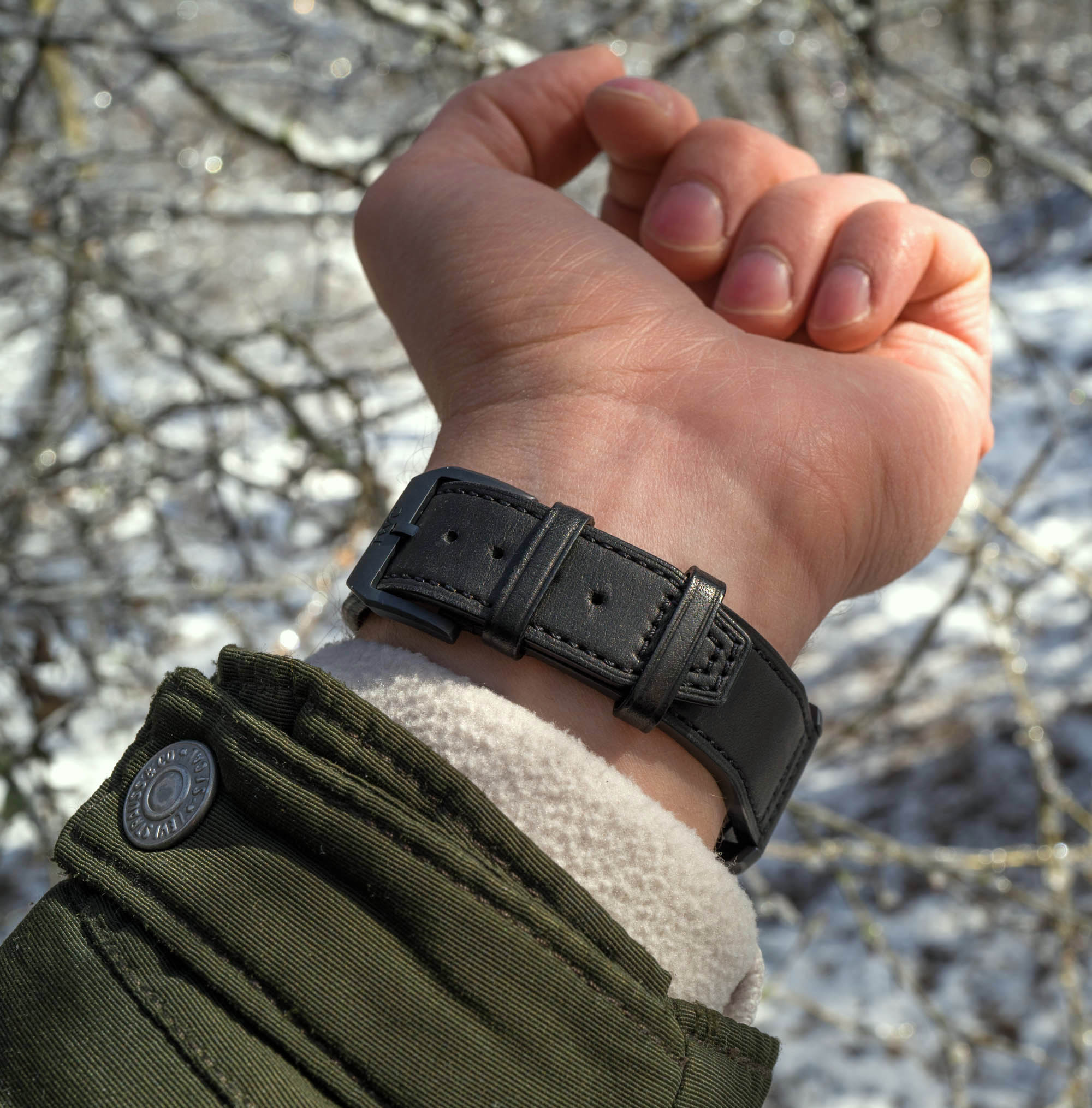
The Mark XI style hands in shiny rhodium and Super-LumiNova set against a high contrast dial mean business, as does the calfskin strap that starts off with a uniform 20mm width and tapers two millimeters. Made in Austria, the strap feels like a quality item from its oily black surface right down to how the black stitching neatly follows the taper of both straps. It’s precisely the sort of leather that will react well to some care by its owner to lengthen its life. The buckle and pin are also in Ceratanium® — no corner-cutting with black DLC-coated metal for these parts. Likewise, the pusher and the crown are also Ceratanium®, where the 3705 used metal for these parts against a black ceramic case.
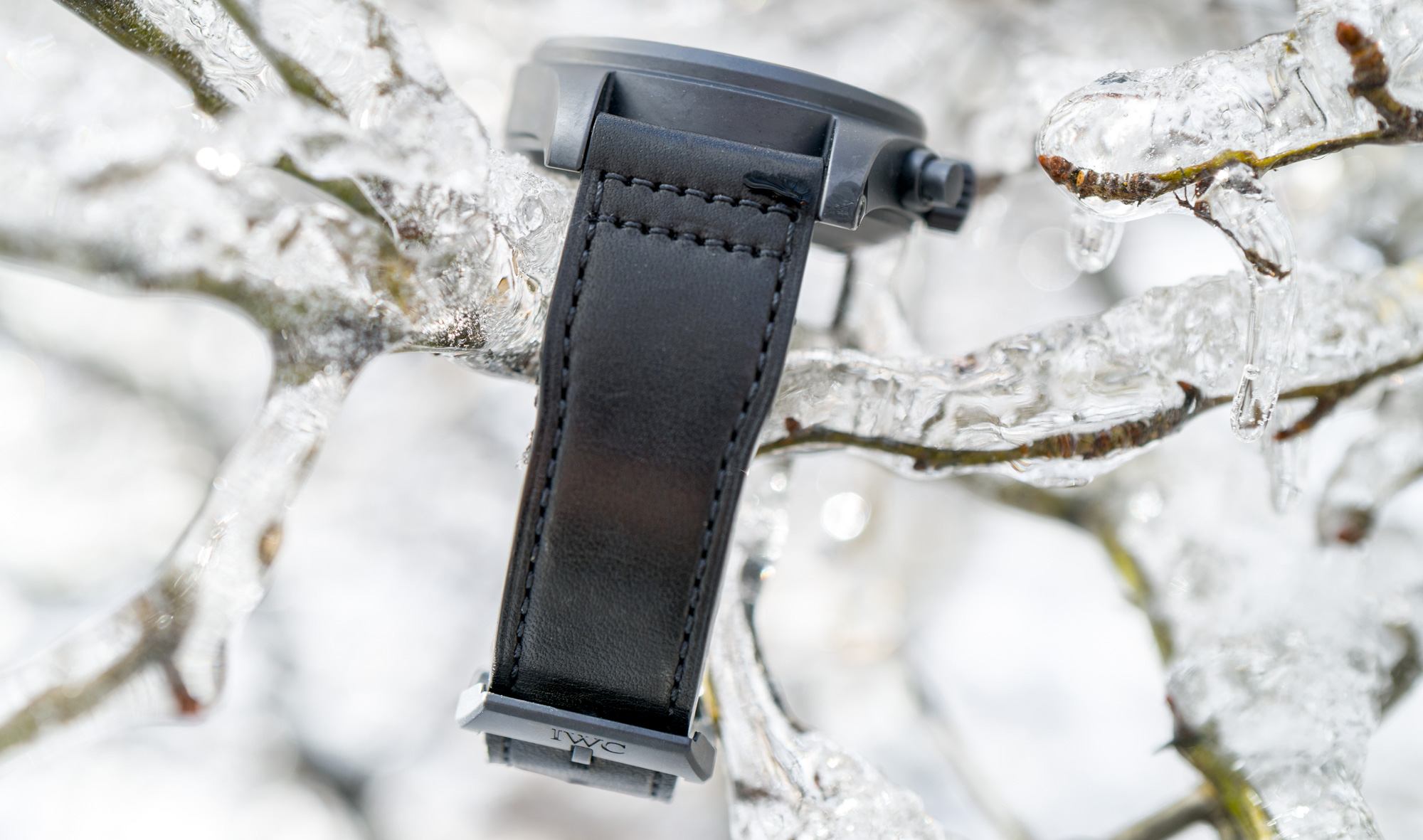
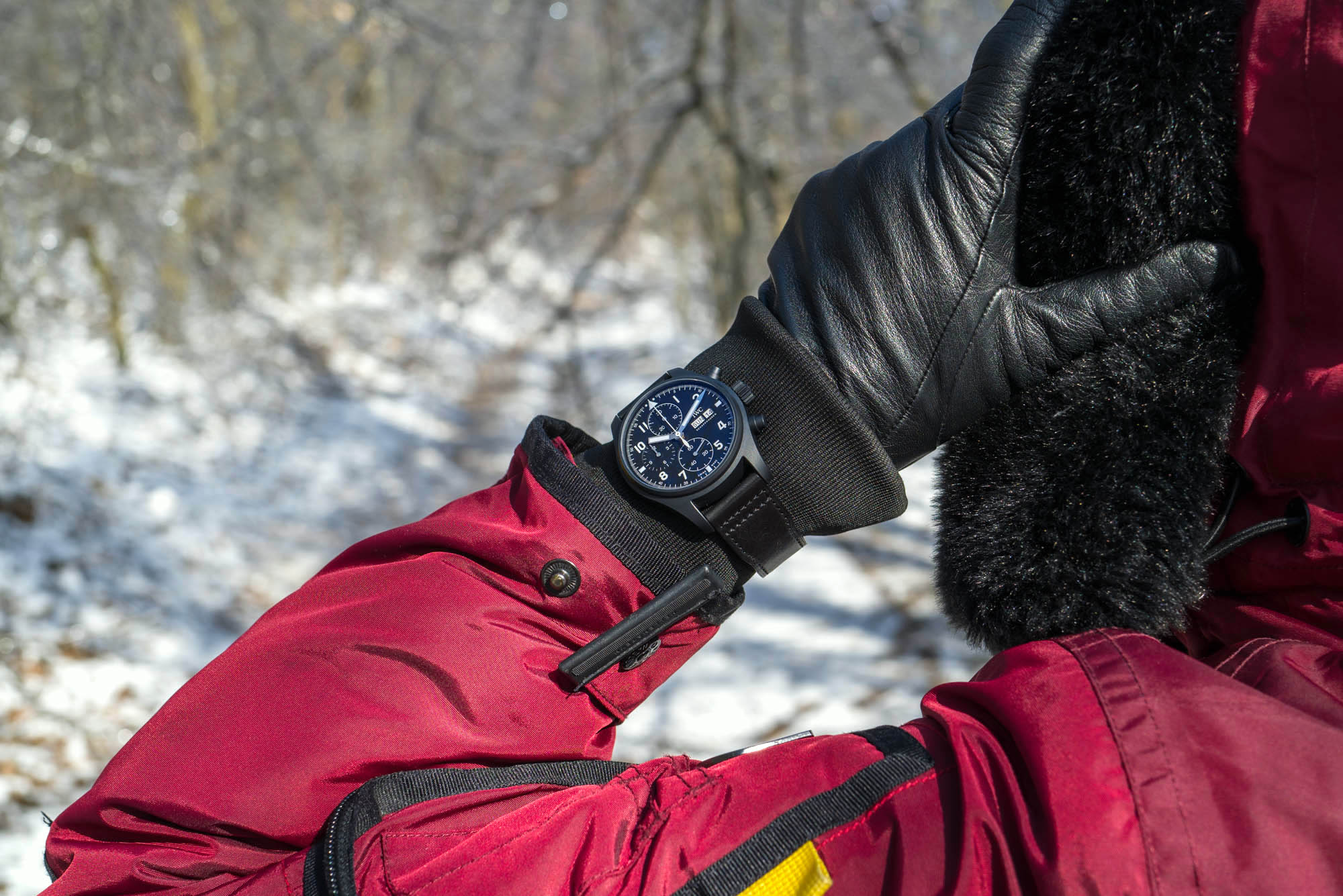
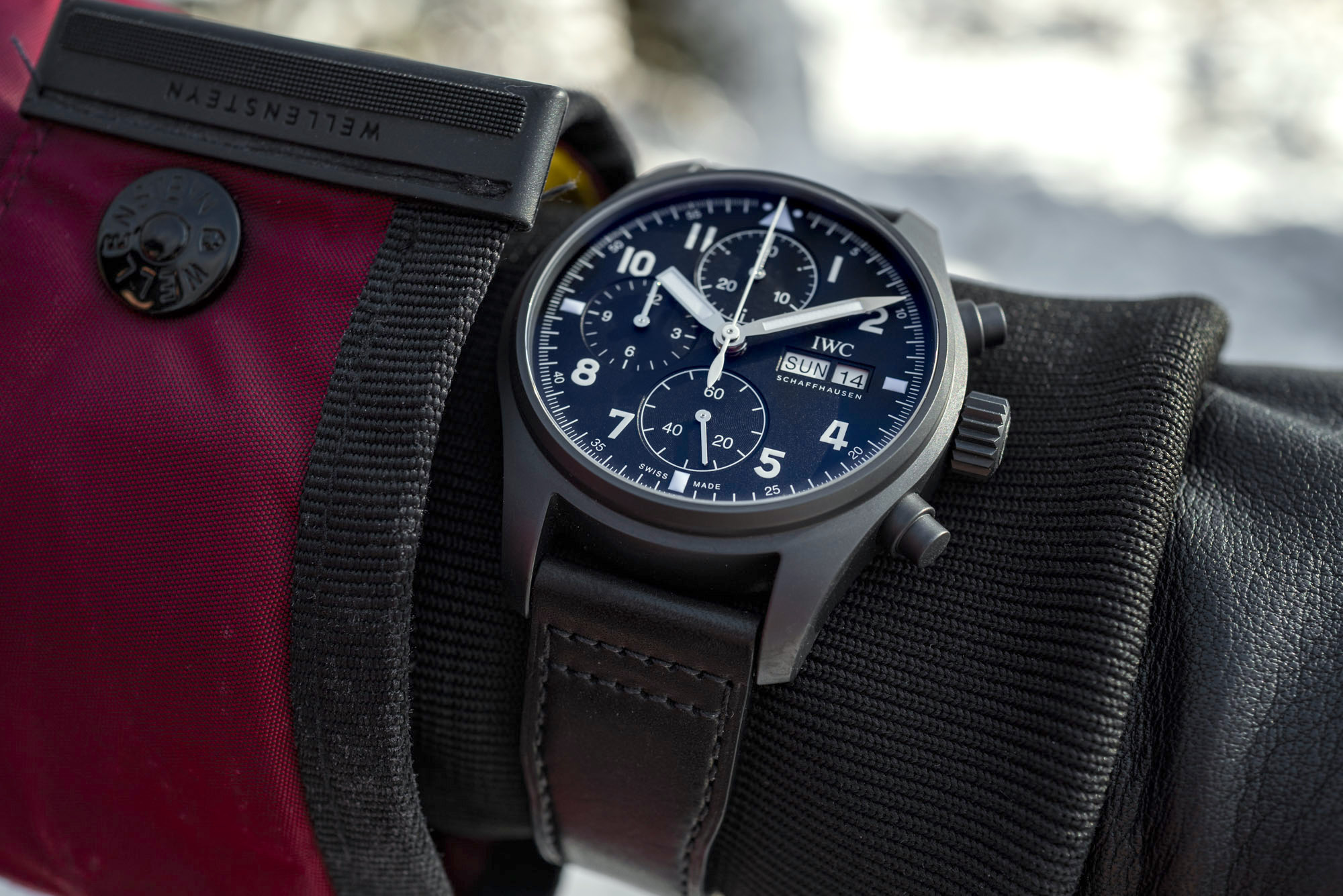
That said, why it’s limited to just 1,000 pieces is, frankly, beyond me. It’s such a solid package, I expect for there to be much greater demand than that. Brands in the magnitude of IWC should, in my opinion, stop resorting to producing such unnecessarily strictly limited runs, especially when they have every reason to expect these will be in great demand. This only provokes resentment from potential IWC customers who will inevitably miss out. The Tribute To 3705 should be a proudly ubiquitous staple of IWC, worn around the world, and not something most watch lovers will never ever get to see in the wild, let alone be able to own, because it’s so unnecessarily rare.
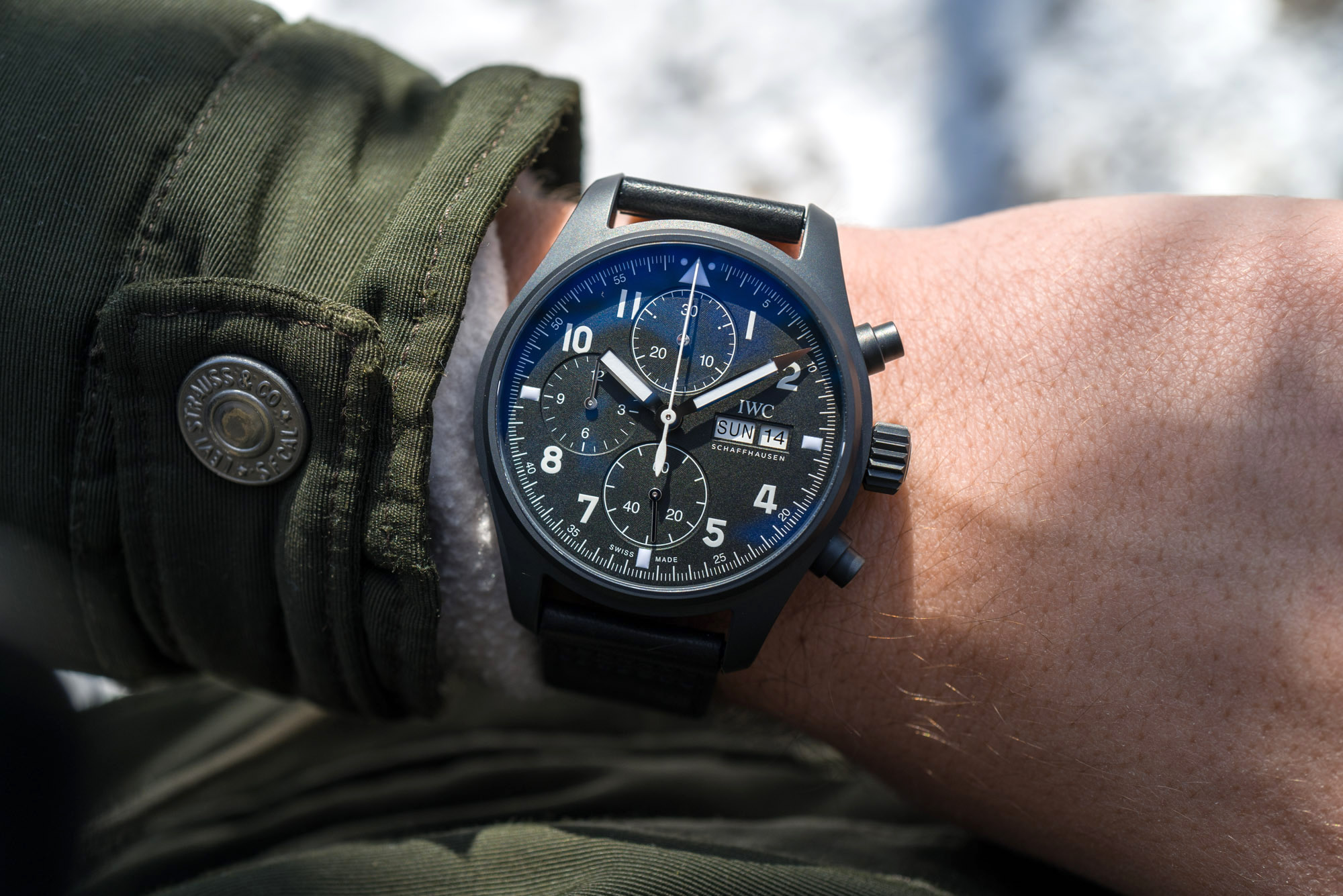
Price for the IWC Pilot’s Watch Chronograph Edition “Tribute To 3705” is $11,900 USD and it will be exclusively available through IWC.com, wechat, YNAP, and the official flagship store on Tmall as a limited edition of 1,000 individually numbered pieces.
Necessary Data
>Brand: IWC
>Model: Pilot’s Watch Chronograph Edition “Tribute To 3705” IW387905.
>Price: $11,900 USD
>Size: 41mm-wide, 15.3mm-thick, and 51.5mm lug-to-lug distance.
>When reviewer would personally wear it: When flying an F-16 over the Alps. Or riding the subway.
>Friend we’d recommend it to first: The one in the market for a stealthy-cool pilot’s watch.
>Best characteristic of watch: Beautiful and powerful IWC DNA, great proportions, and a very likable wearing experience.
>Worst characteristic of watch: Some odd design quirks which ideally should’ve been ironed out.

